Voici un vidéo que j'ai fait, malheureusement, j'était pas full équipé et on ne vois pas à son plein potentiel, mais on peut clairement comprendre tout de même.
En fait, ici, ce que je veux démontrer, c'est qu'est-ce qu'un ''detailer'' veux vous dire lorsqu'il dit que votre peinture est plutôt ''soft''. Voyez comment la peinture, au simple touché de ma microfibre, avec une légère pression, marque, de façon permanente, la peinture.
Mais, Alex, qu'est-ce que j'en ai à foutre moi ?
1) En fait, l'idée est qu'il faut comprendre qu'un fini parfait sur une peinture molle est EXTRÈMEMENT difficile à accomplir car même en cirant la peinture, il y a risque d'endommagé la peinture.
2) Au niveau du polissage de finition, souvent, il est nécessaire d'avoir recours à un extra ''step'' pour finir la peinture à un état showroom. Dépendamement du projet et du résultat j'obtiens, j'opte sois pour le faire à la machine, soit à la main.Puis, ensuite, je cire.
3) L'avantage, par contre, est que la correction est beaucoup plus facile qu'une peinture avec un clear ''dure''. Par exemple, sur une peinture soft, on peut atteindre 20% plus de correction avec le même nombre de step que sur une peinture dure. Je suppose que la raison est que la peinture nous apparait en très mauvaise condition, à priori, mais, en fait, ce ne sont que de petites swirls en surfaces et rien de très sérieux. donc un poli corrige une grande majorité des imperfections et laisse l'impression d'une plus grand correction.
Mais, Alex, comment savoir quelle type de peinture que j'ai ?
Comme je le démontre dans le vidéo, si vous êtes capables de marqué de façon permanente votre peinture avec une microfibre propre, il y a de très bonne chance qu'elle soit molle.
Sinon, le livre d'or générale des detailer du WWW, nous apprend que la majorité des japonaises et américaines bas de gammes sont du coté mou et la majorité des repaints/bodyshop/aftermarket le sont aussi.
Tranche de vie, j'ai travaillé, à temps pleins et à la pige, pour quelques bodyshop et je peux vous dire que maintenant j'essaye d'éviter ce genre de contrat; les peintures sont toujours trop fraiches, trop molles, impossible à finir parfait. Pourtant le client, c'est ce qu'il attend comme résultat et moi, j'aimerai lui offrir ça. Par contre, de l'autre coté, mon employeur, la bodyshop/ peintre, lui me dit que le client n'a pas payé et qu'il lui a fait une job ''average''. Alors, je me ramassais toujours à faire des jobs à moitié et soit le client, soit le boss n'était pas content. C'est plate.*td*
Conclusion: Si vous posséder une peinture molle, le moins que vous touchez votre peinture, le plus elle sera belle !:bigup:
** Clear coat dure **
Pour une peinture à clear coat dure, C'est le contraire de ce que vous venez de lire pour une peinture molle, il est pratiquement impossible d'endommager son fini avec une microfibre.
Par contre, tout chose étant égale par ailleurs, la correction sera moindre car le clear est plus dure à travailler et prend des abrasif plus puissant pour arriver au même niveau de correction.
L'avantage, par ailleurs, est qu'il est plus facile de faire un sablage à l'eau ou des corrections majeures sur une peinture dure qu'une peinture molle car le clear ramolit moins au polissage comparé à une peinture molle.
Finalement, une finition showroom est plus facile à avoir avec un clear plus dure.
The video shows how easily I can scratch the soft paint with very little pressure and a clean microfiber. Please watch it in 480p, it's still better than 240p!
...But the question is, so what? why should I care?
Well, I did this so people understand when I tell them that their clear coat is rather on the soft side so they can understand that a showroom finish on their paint is very hard to achieve because the simple action of waxing your car can introduce light scratch on the new-looking finish.
2) You should also know that it's pretty hard to achieve a perfect finish on such paint. Sometimes an extra ''step'' is needed to be done by machine or by hand, depends on the condition of the finish.
3) Another thing you should know and might interest you more than the rest is that with a soft clear coat, you can usually achieve a better correction with the same amount of step compared to a hard clear coat. That's my theory; the paint on your car might look really bad but since it's so easy to introduce swirls and since there's so many swirls on the car, it's hard to judge if it's light swirls or deeper scratches but most of the times it's #1 case. In that case, since the clear is softer, the correction is better thus resulting in a better finish/correction.
Next question I can get is.. how can I know if my paint is on the soft side or hard ?
If you can permantly scratch the paint with a clean microfiber. chance are your clear coat is soft or REALLY SOFT haha!
Another thing is that on many detailing forum there's some basic rule of thumb where japanese and lower-end american car are rather soft.
Lastly, OK, so I have a german car, what's the difference between a hard clear coat Vs. a soft one ?
Pretty simple since I gave you cue and comparaison 2 minutes ago. so a hard clear coat won't scratch with the touch of a microfiber. It will finish better compared to a soft clear coat with the same amount of step/times.
On the down side tho, for the same amount of step, the correction will be least because the damage on a hard clear coat is usually deeper because you can't ligthly damage a hard clear like you can on a soft.
Conclusion: it doesn't look as swirly but your damage are more serious than a soft clear so there's big chance you will need an extra step to achieve the same correction that you would see on a soft clear.
For a soft paint, the less you touch your paint, the better it will look like.
Anecdote, I had a guy who I detailed his car every year but he started getting mad at me because he said my result didn't last. But that guy was the kind of week-end detailer who like to put something on his paint every single week-end. Well, I didn't want to insult him but I showed him that the defect on his paint wasn,t my fault but actually his fault because he had no washing technique and nor did he knew how to wax a paint..
Voici un exemple d'une auto d'été qui a été repeinturé l'an passé. Voyez la condition = un clear très mou.
Here's an exemple of a very soft clear. Imagine this car is a summer car and was repainted last year, how can it be so swirled?

En fait, ici, ce que je veux démontrer, c'est qu'est-ce qu'un ''detailer'' veux vous dire lorsqu'il dit que votre peinture est plutôt ''soft''. Voyez comment la peinture, au simple touché de ma microfibre, avec une légère pression, marque, de façon permanente, la peinture.
Mais, Alex, qu'est-ce que j'en ai à foutre moi ?
1) En fait, l'idée est qu'il faut comprendre qu'un fini parfait sur une peinture molle est EXTRÈMEMENT difficile à accomplir car même en cirant la peinture, il y a risque d'endommagé la peinture.
2) Au niveau du polissage de finition, souvent, il est nécessaire d'avoir recours à un extra ''step'' pour finir la peinture à un état showroom. Dépendamement du projet et du résultat j'obtiens, j'opte sois pour le faire à la machine, soit à la main.Puis, ensuite, je cire.
3) L'avantage, par contre, est que la correction est beaucoup plus facile qu'une peinture avec un clear ''dure''. Par exemple, sur une peinture soft, on peut atteindre 20% plus de correction avec le même nombre de step que sur une peinture dure. Je suppose que la raison est que la peinture nous apparait en très mauvaise condition, à priori, mais, en fait, ce ne sont que de petites swirls en surfaces et rien de très sérieux. donc un poli corrige une grande majorité des imperfections et laisse l'impression d'une plus grand correction.
Mais, Alex, comment savoir quelle type de peinture que j'ai ?
Comme je le démontre dans le vidéo, si vous êtes capables de marqué de façon permanente votre peinture avec une microfibre propre, il y a de très bonne chance qu'elle soit molle.
Sinon, le livre d'or générale des detailer du WWW, nous apprend que la majorité des japonaises et américaines bas de gammes sont du coté mou et la majorité des repaints/bodyshop/aftermarket le sont aussi.
Tranche de vie, j'ai travaillé, à temps pleins et à la pige, pour quelques bodyshop et je peux vous dire que maintenant j'essaye d'éviter ce genre de contrat; les peintures sont toujours trop fraiches, trop molles, impossible à finir parfait. Pourtant le client, c'est ce qu'il attend comme résultat et moi, j'aimerai lui offrir ça. Par contre, de l'autre coté, mon employeur, la bodyshop/ peintre, lui me dit que le client n'a pas payé et qu'il lui a fait une job ''average''. Alors, je me ramassais toujours à faire des jobs à moitié et soit le client, soit le boss n'était pas content. C'est plate.*td*
Conclusion: Si vous posséder une peinture molle, le moins que vous touchez votre peinture, le plus elle sera belle !:bigup:
** Clear coat dure **
Pour une peinture à clear coat dure, C'est le contraire de ce que vous venez de lire pour une peinture molle, il est pratiquement impossible d'endommager son fini avec une microfibre.
Par contre, tout chose étant égale par ailleurs, la correction sera moindre car le clear est plus dure à travailler et prend des abrasif plus puissant pour arriver au même niveau de correction.
L'avantage, par ailleurs, est qu'il est plus facile de faire un sablage à l'eau ou des corrections majeures sur une peinture dure qu'une peinture molle car le clear ramolit moins au polissage comparé à une peinture molle.
Finalement, une finition showroom est plus facile à avoir avec un clear plus dure.
The video shows how easily I can scratch the soft paint with very little pressure and a clean microfiber. Please watch it in 480p, it's still better than 240p!
...But the question is, so what? why should I care?
Well, I did this so people understand when I tell them that their clear coat is rather on the soft side so they can understand that a showroom finish on their paint is very hard to achieve because the simple action of waxing your car can introduce light scratch on the new-looking finish.
2) You should also know that it's pretty hard to achieve a perfect finish on such paint. Sometimes an extra ''step'' is needed to be done by machine or by hand, depends on the condition of the finish.
3) Another thing you should know and might interest you more than the rest is that with a soft clear coat, you can usually achieve a better correction with the same amount of step compared to a hard clear coat. That's my theory; the paint on your car might look really bad but since it's so easy to introduce swirls and since there's so many swirls on the car, it's hard to judge if it's light swirls or deeper scratches but most of the times it's #1 case. In that case, since the clear is softer, the correction is better thus resulting in a better finish/correction.
Next question I can get is.. how can I know if my paint is on the soft side or hard ?
If you can permantly scratch the paint with a clean microfiber. chance are your clear coat is soft or REALLY SOFT haha!
Another thing is that on many detailing forum there's some basic rule of thumb where japanese and lower-end american car are rather soft.
Lastly, OK, so I have a german car, what's the difference between a hard clear coat Vs. a soft one ?
Pretty simple since I gave you cue and comparaison 2 minutes ago. so a hard clear coat won't scratch with the touch of a microfiber. It will finish better compared to a soft clear coat with the same amount of step/times.
On the down side tho, for the same amount of step, the correction will be least because the damage on a hard clear coat is usually deeper because you can't ligthly damage a hard clear like you can on a soft.
Conclusion: it doesn't look as swirly but your damage are more serious than a soft clear so there's big chance you will need an extra step to achieve the same correction that you would see on a soft clear.
For a soft paint, the less you touch your paint, the better it will look like.
Anecdote, I had a guy who I detailed his car every year but he started getting mad at me because he said my result didn't last. But that guy was the kind of week-end detailer who like to put something on his paint every single week-end. Well, I didn't want to insult him but I showed him that the defect on his paint wasn,t my fault but actually his fault because he had no washing technique and nor did he knew how to wax a paint..
Voici un exemple d'une auto d'été qui a été repeinturé l'an passé. Voyez la condition = un clear très mou.
Here's an exemple of a very soft clear. Imagine this car is a summer car and was repainted last year, how can it be so swirled?



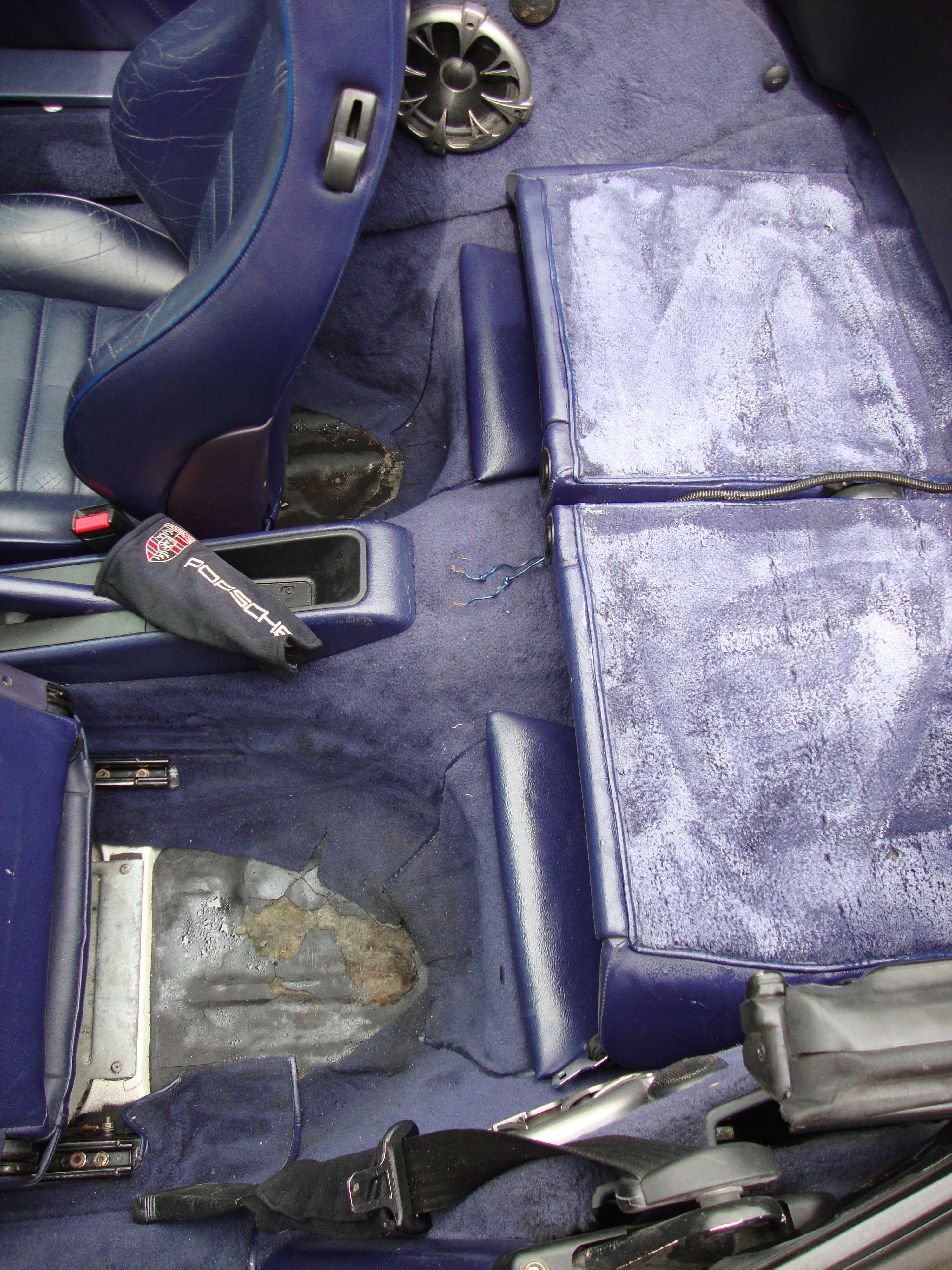




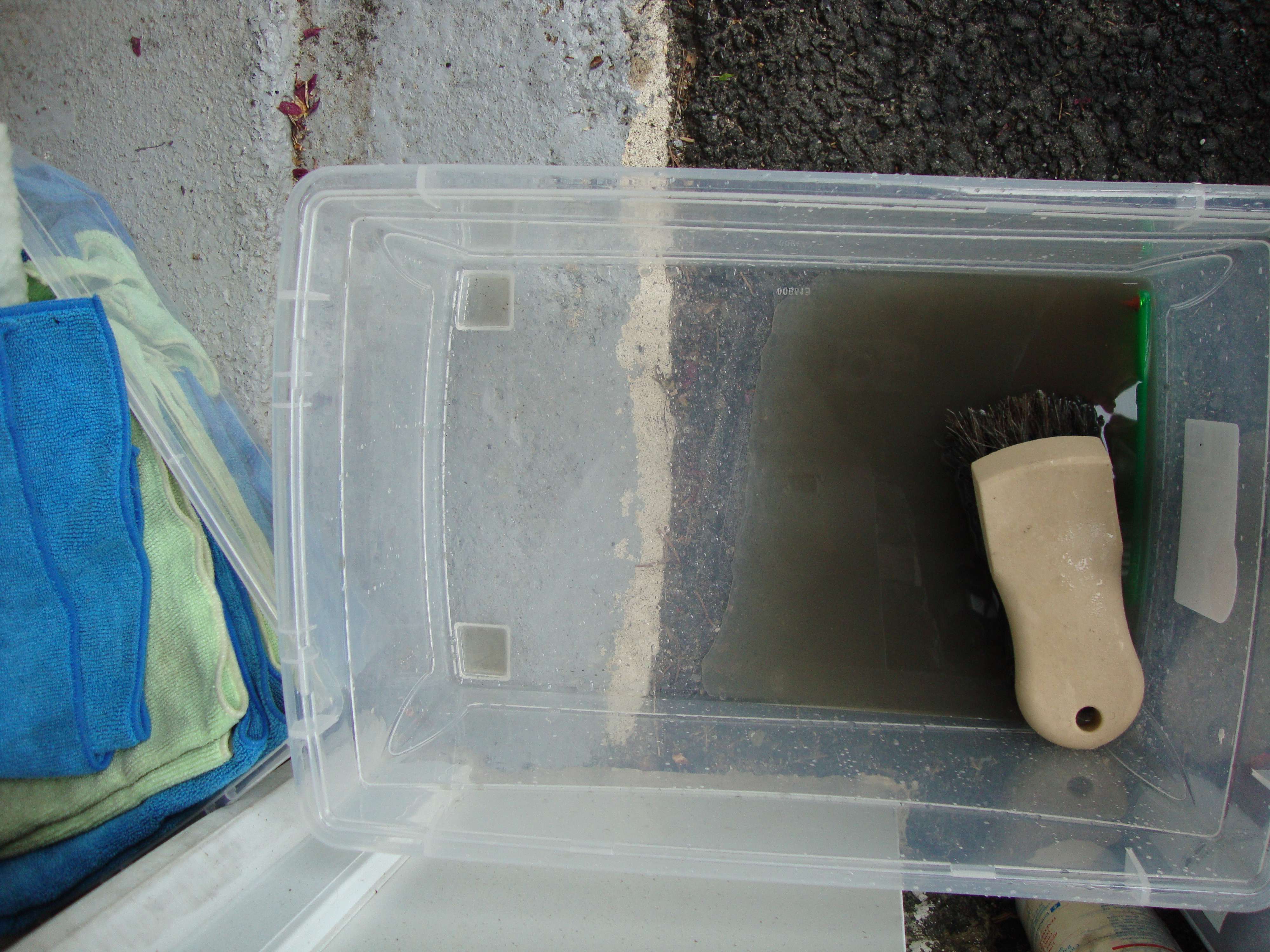
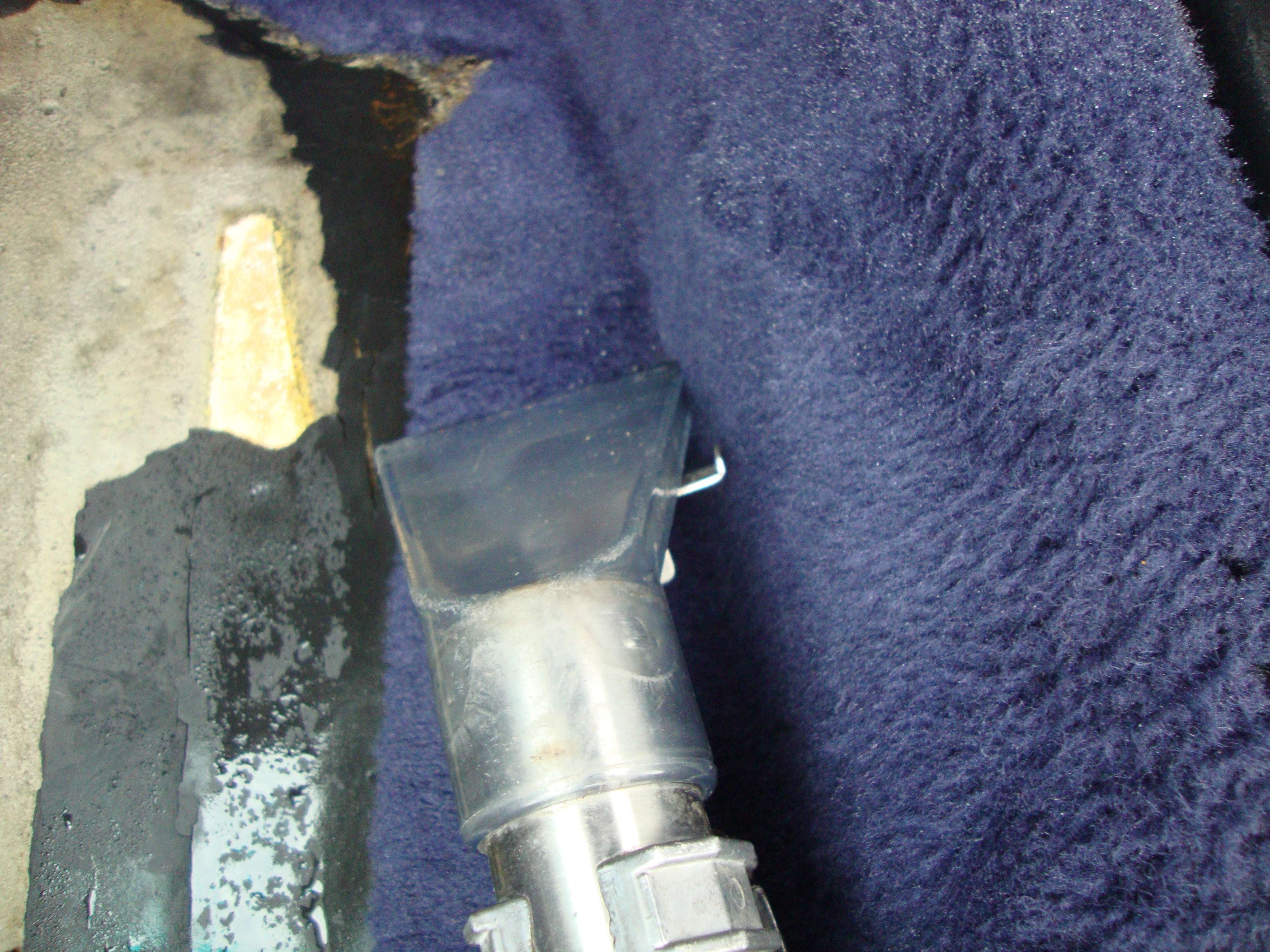


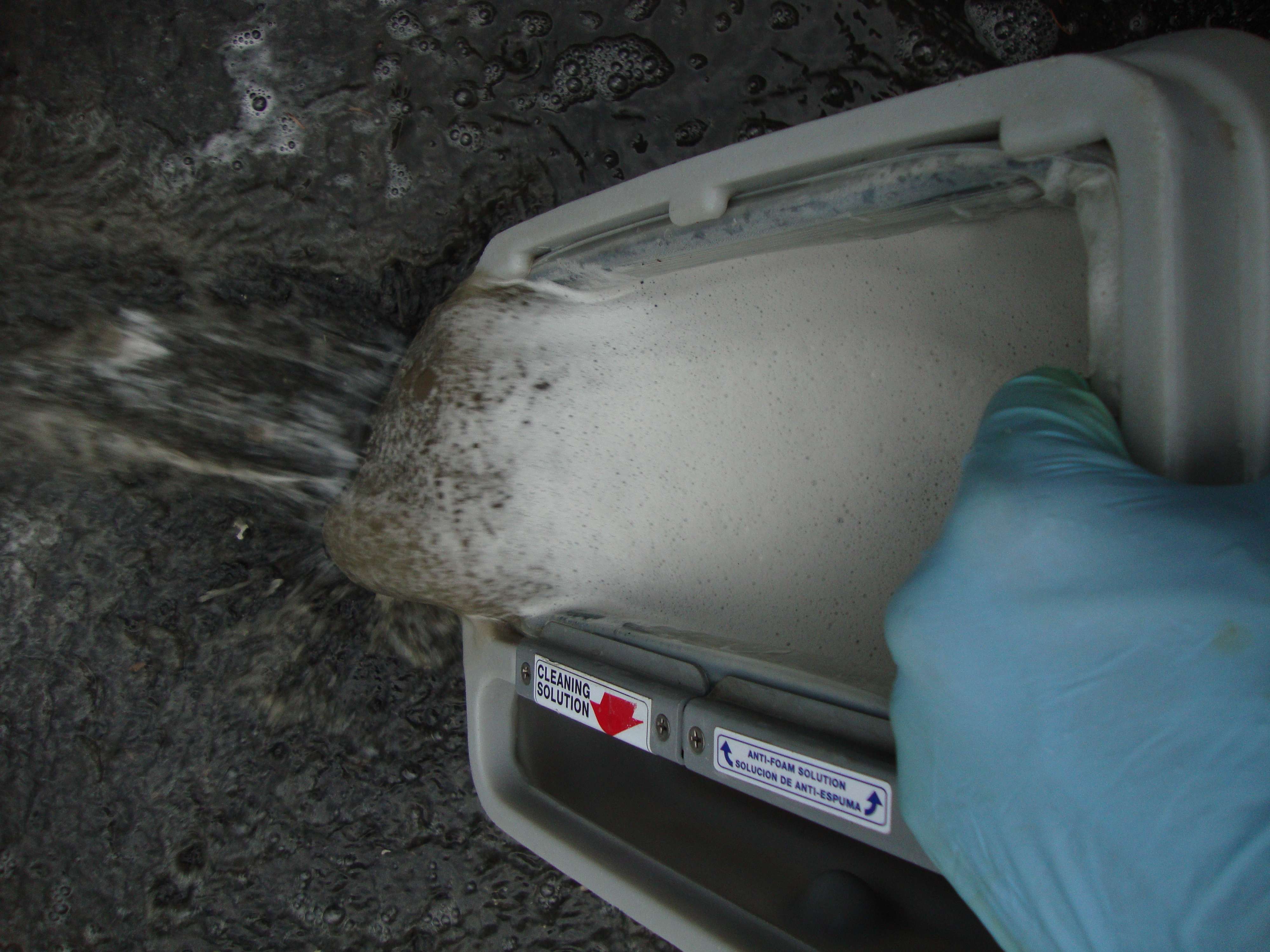
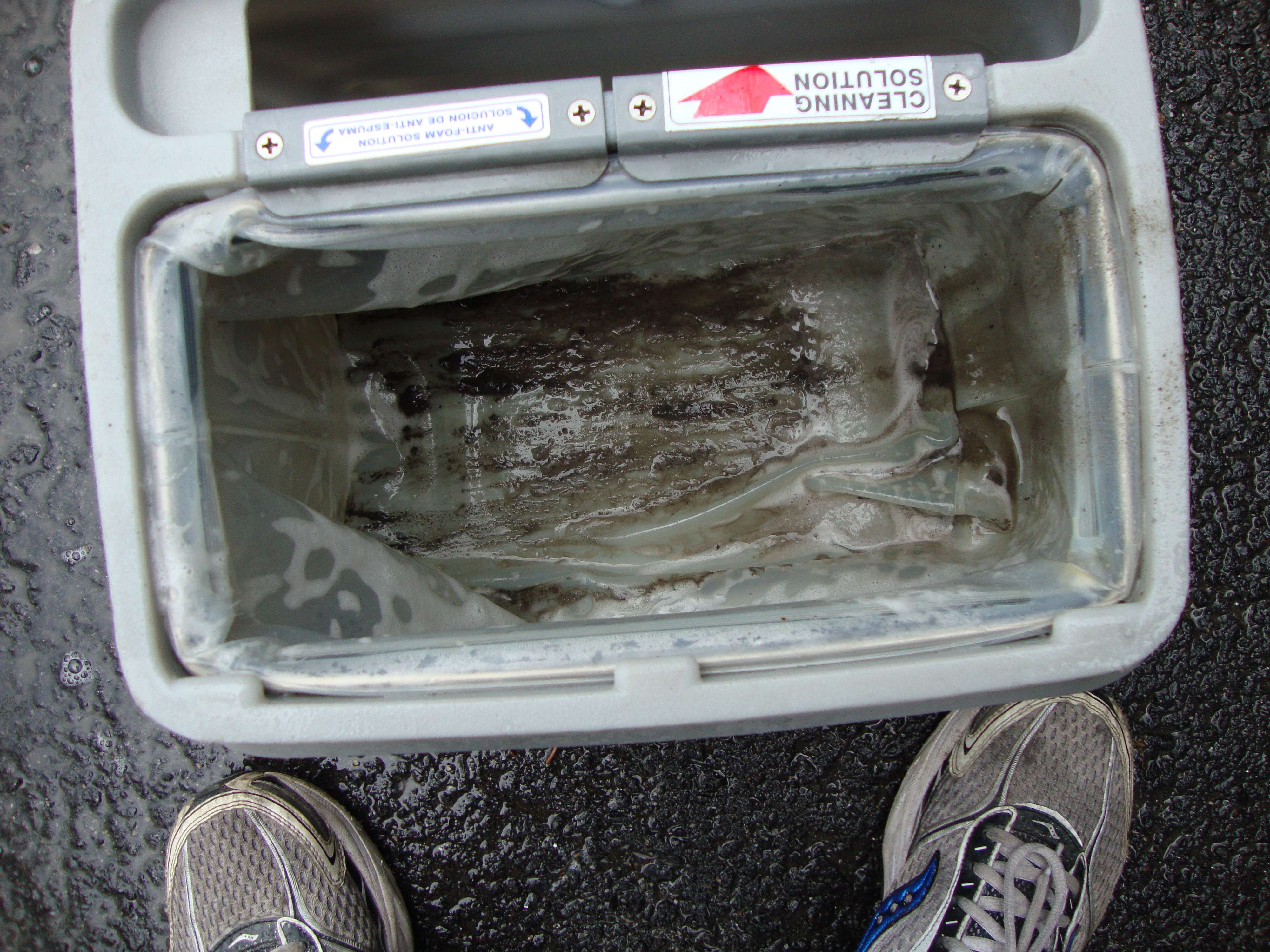
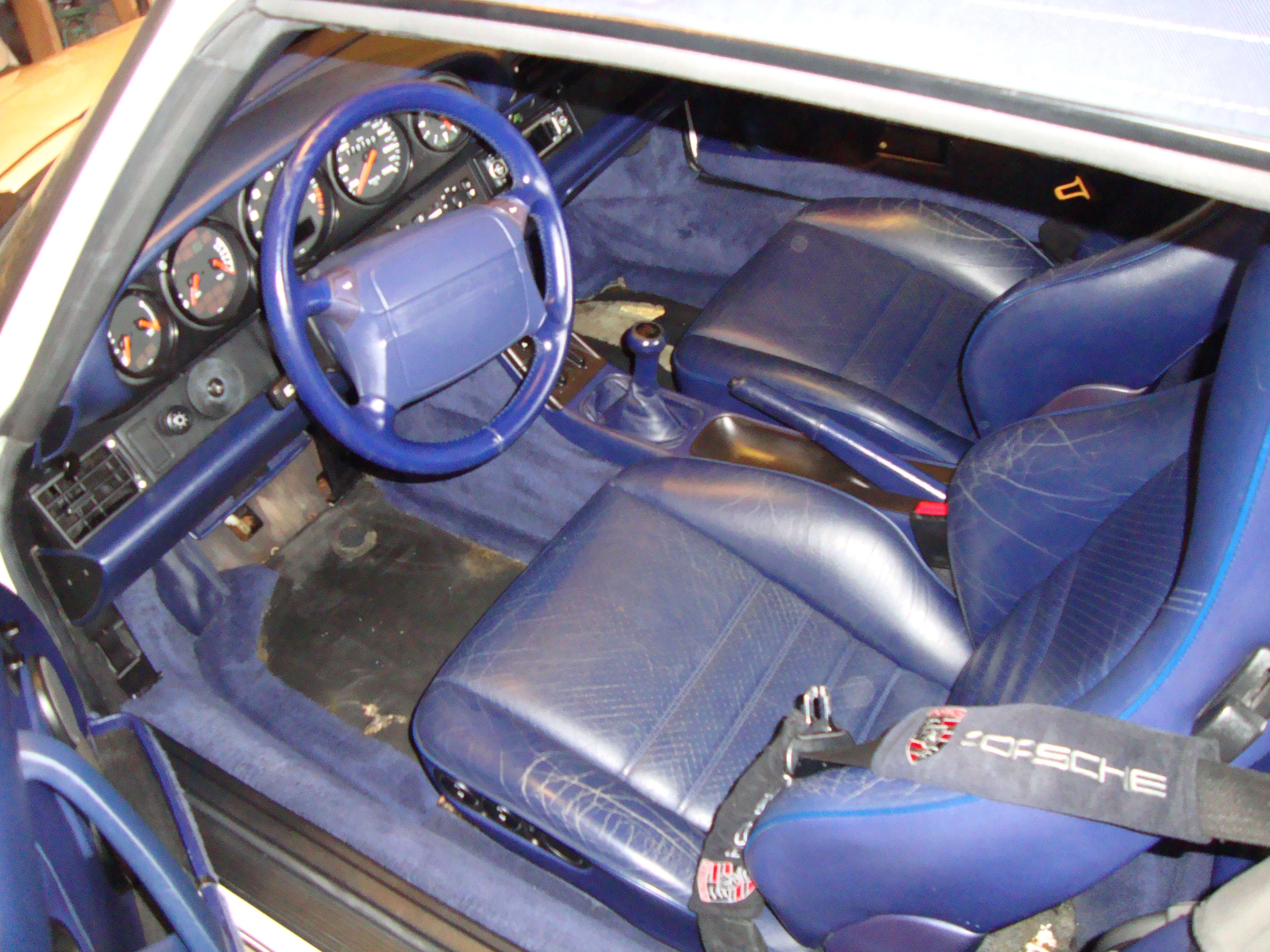

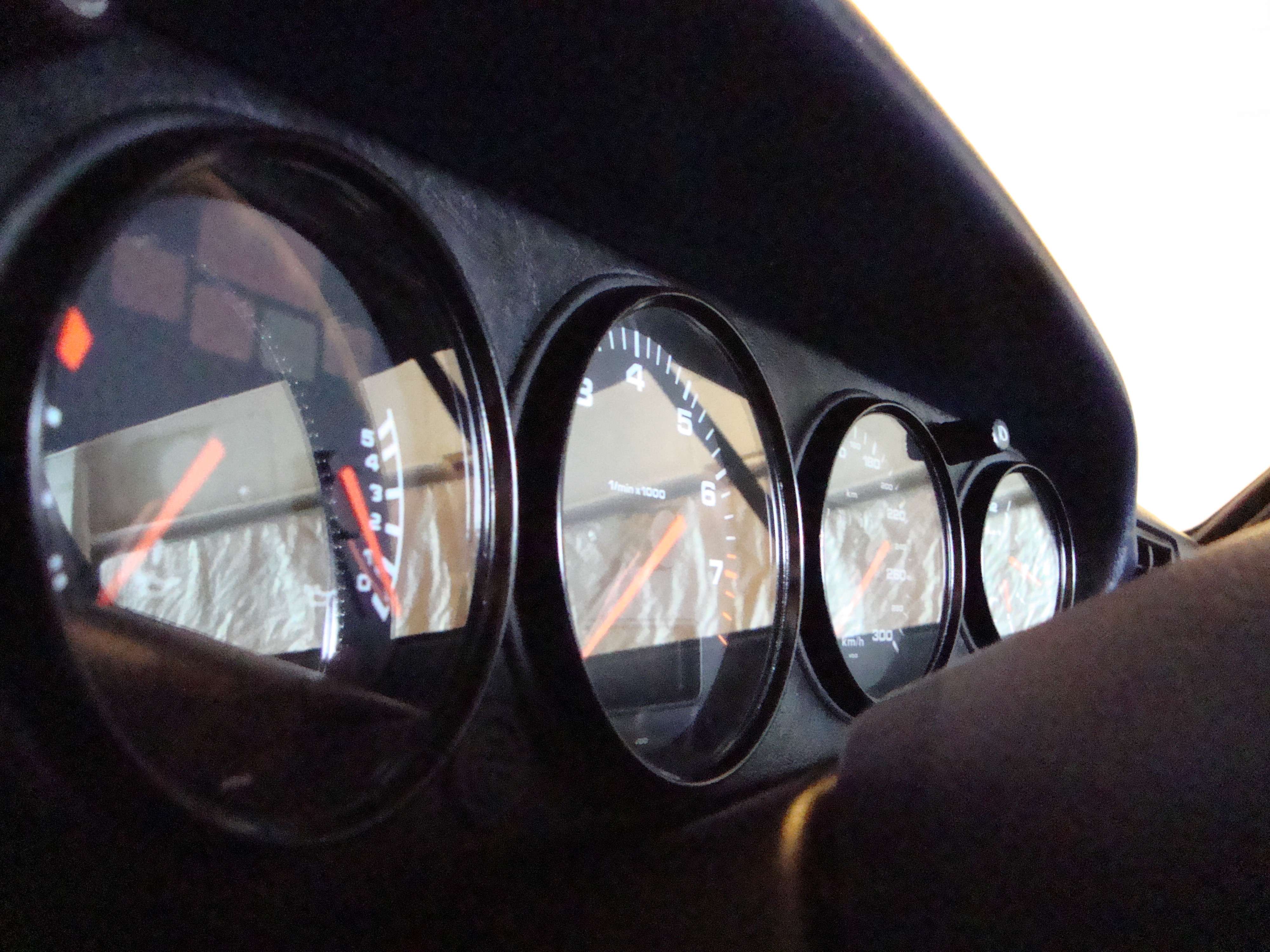
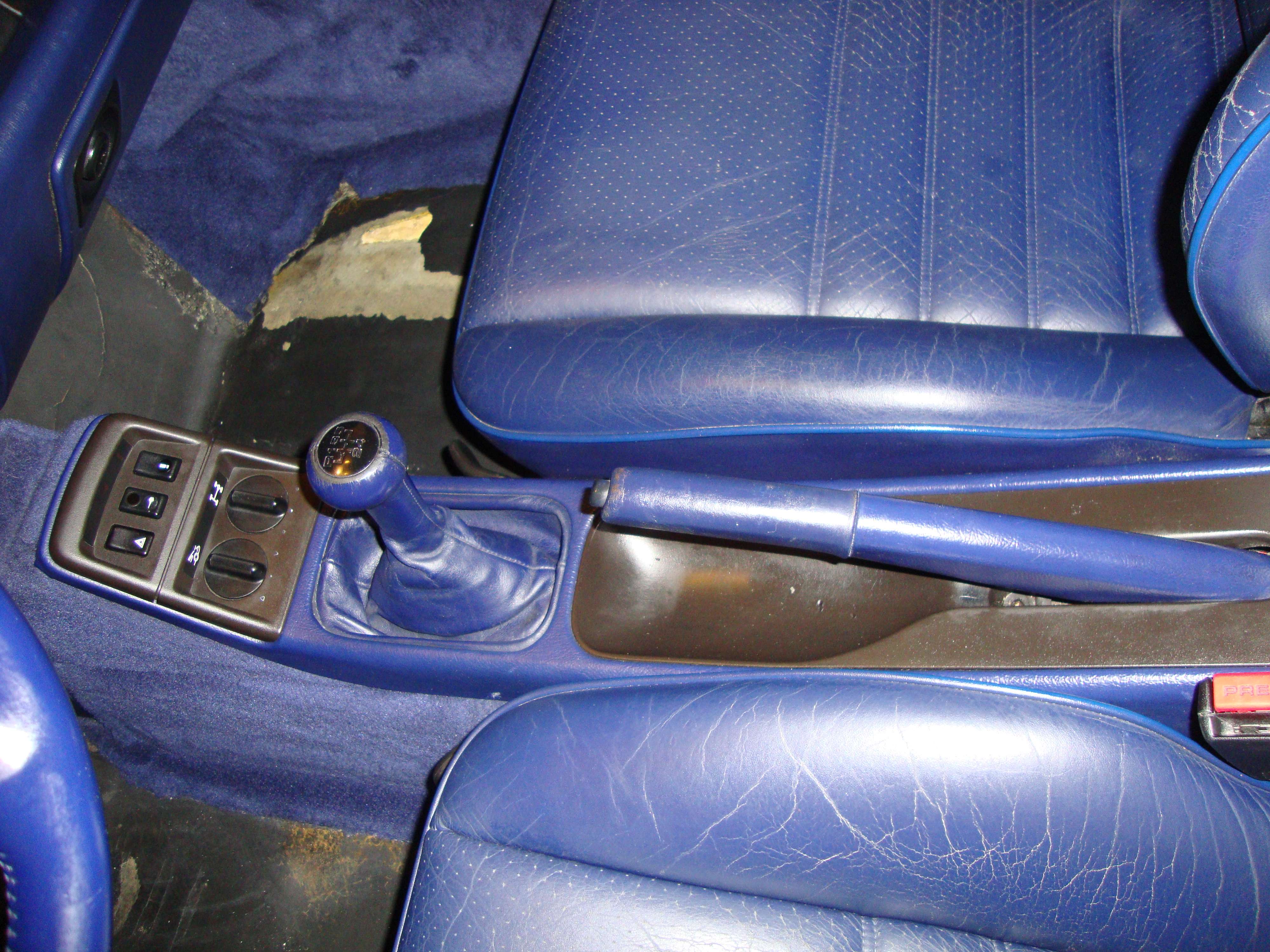



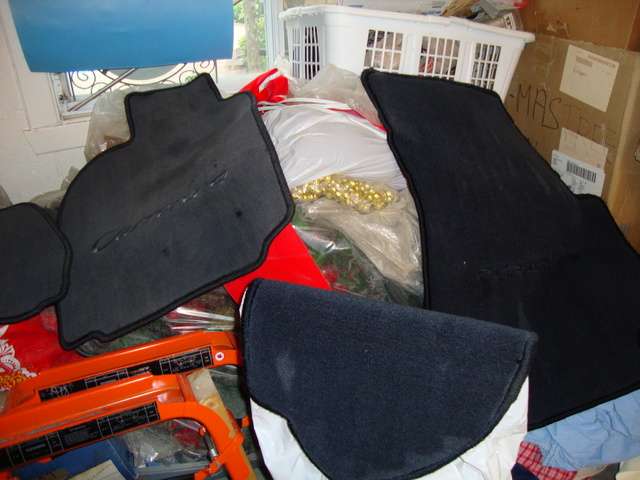



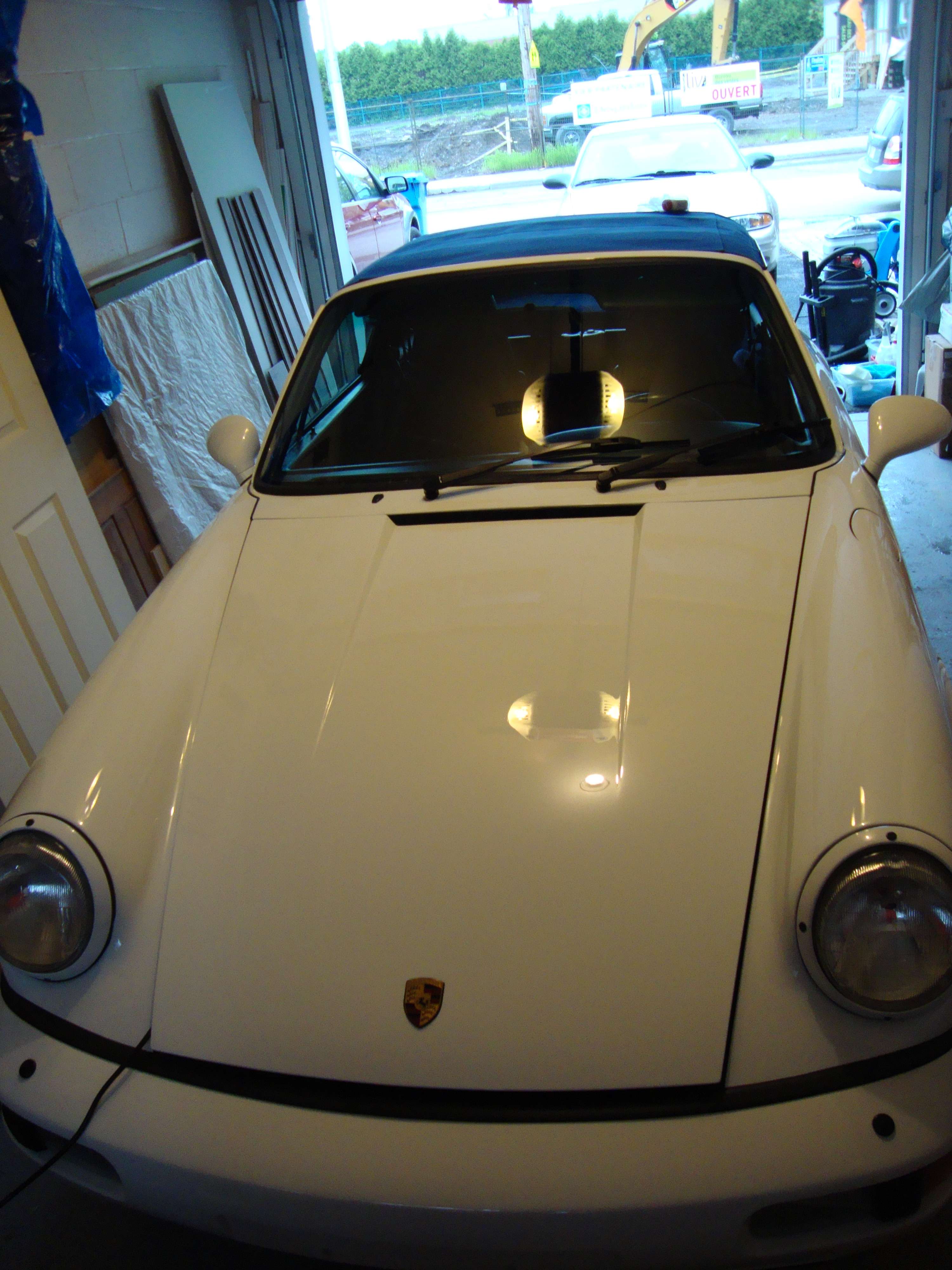

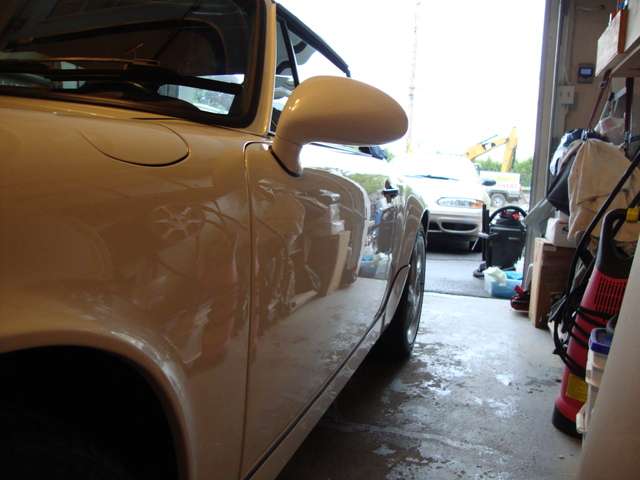





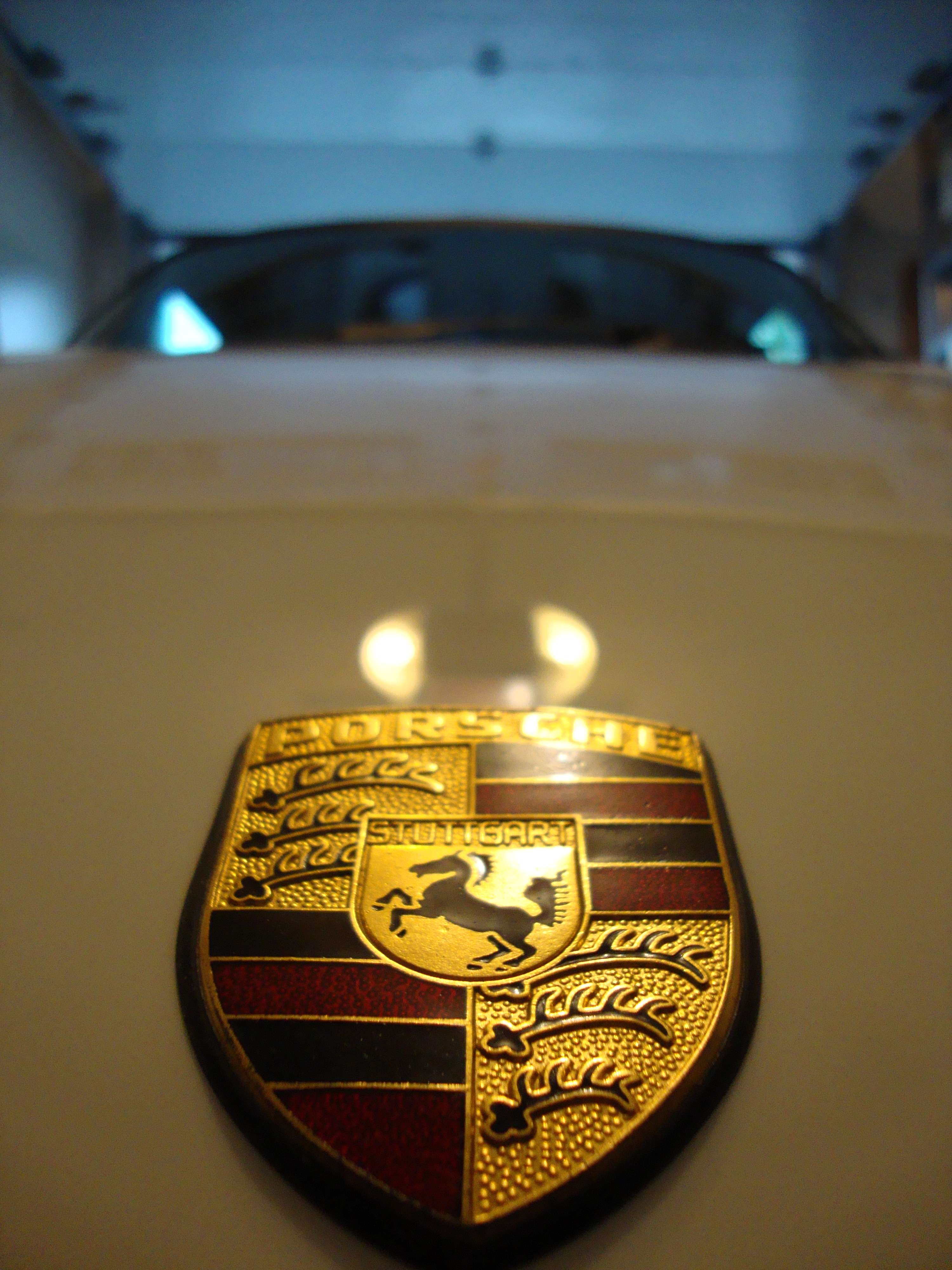
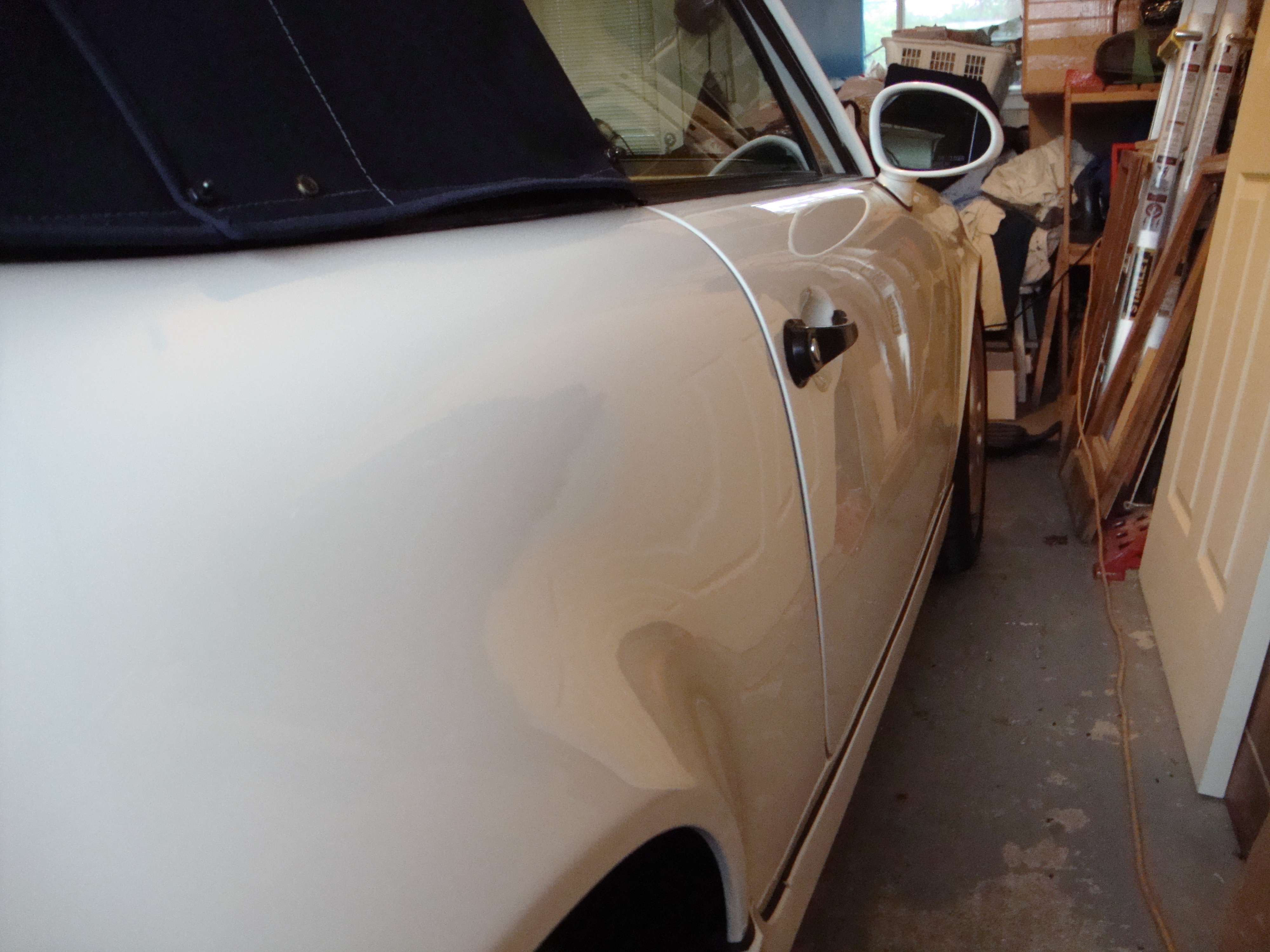
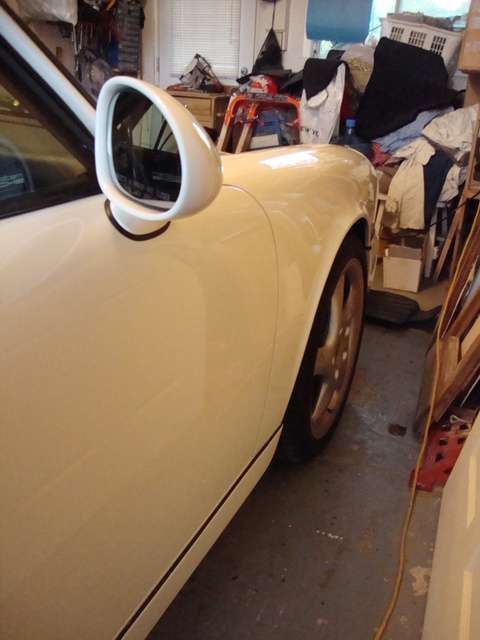

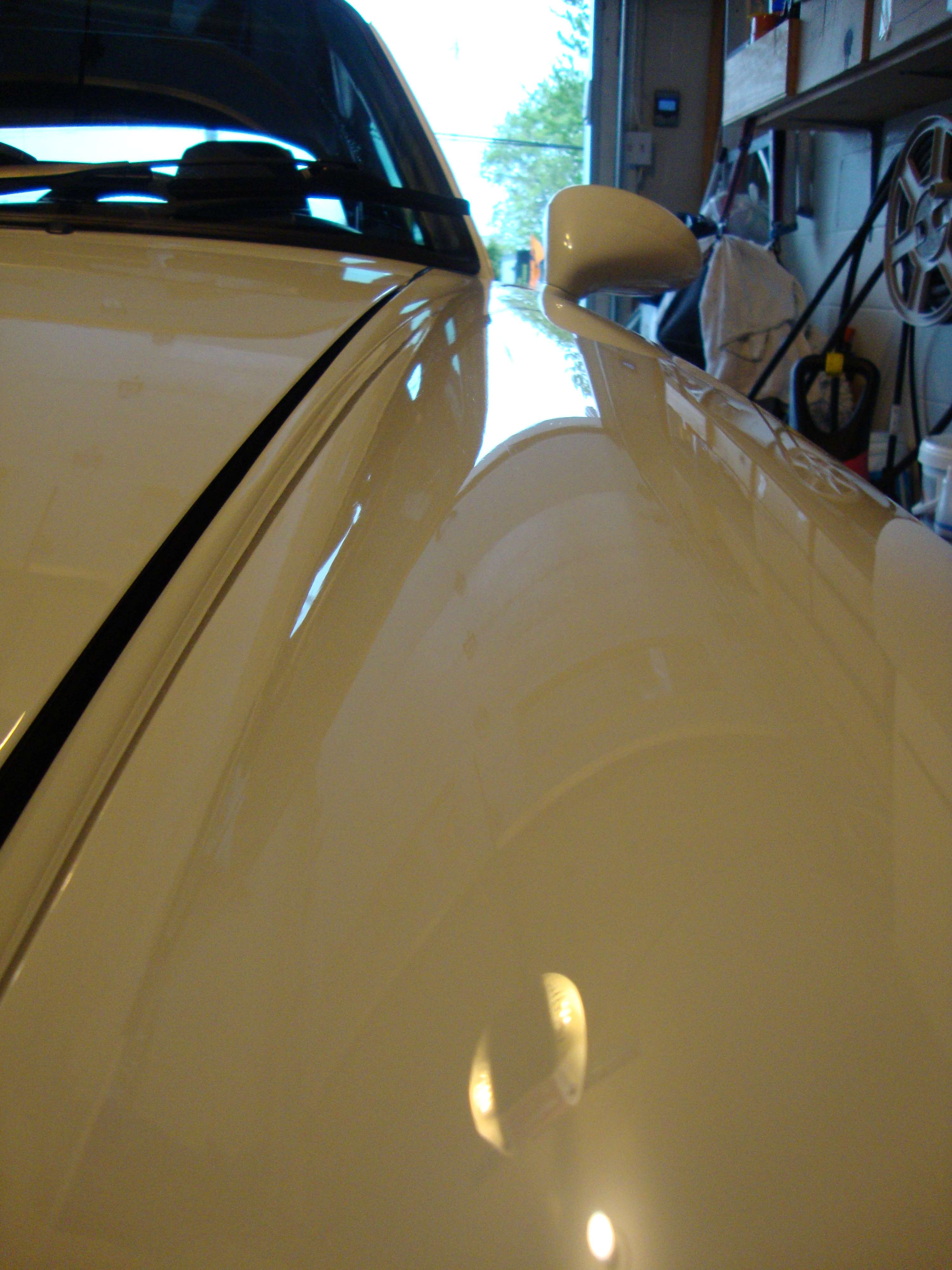















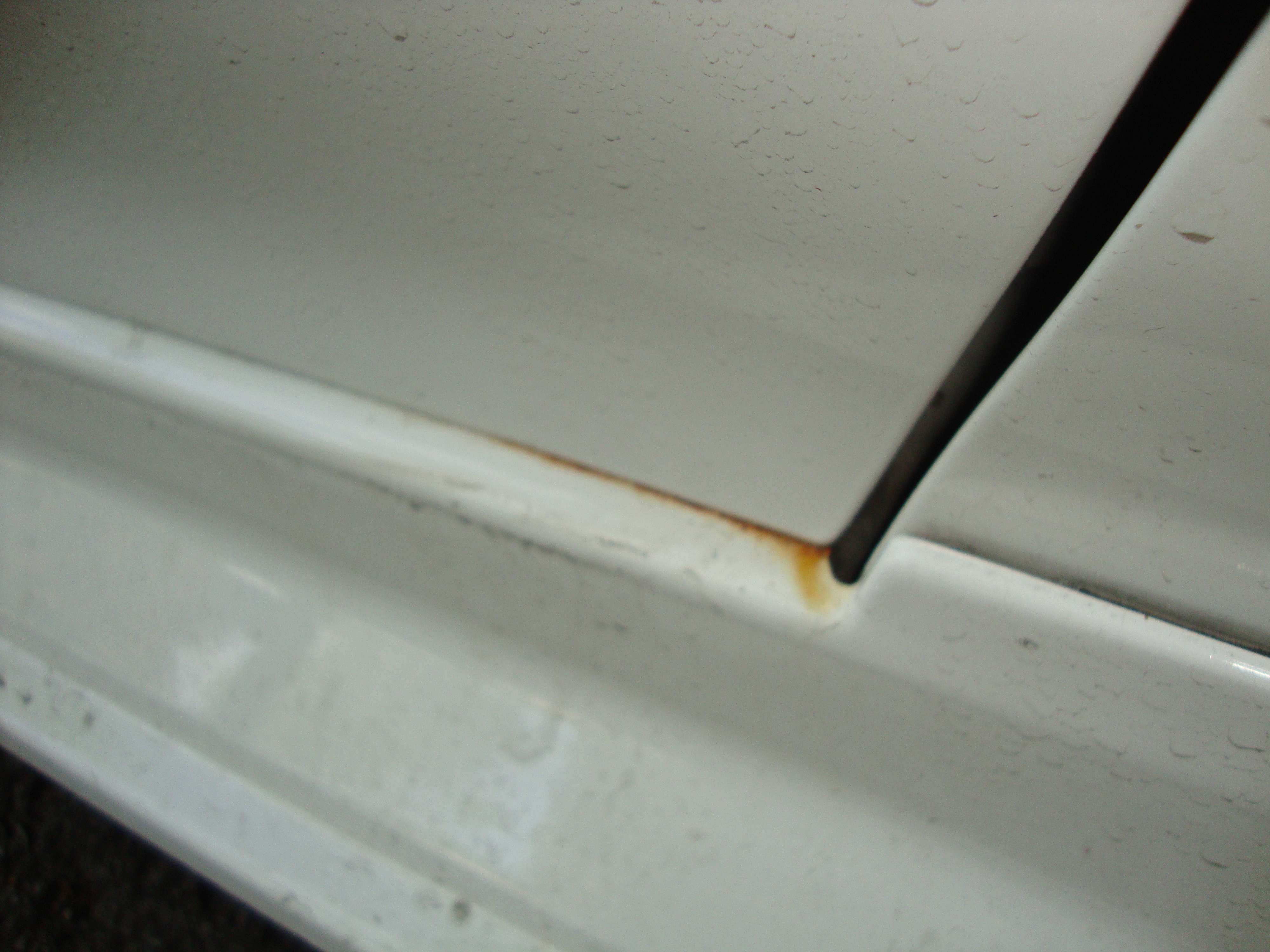
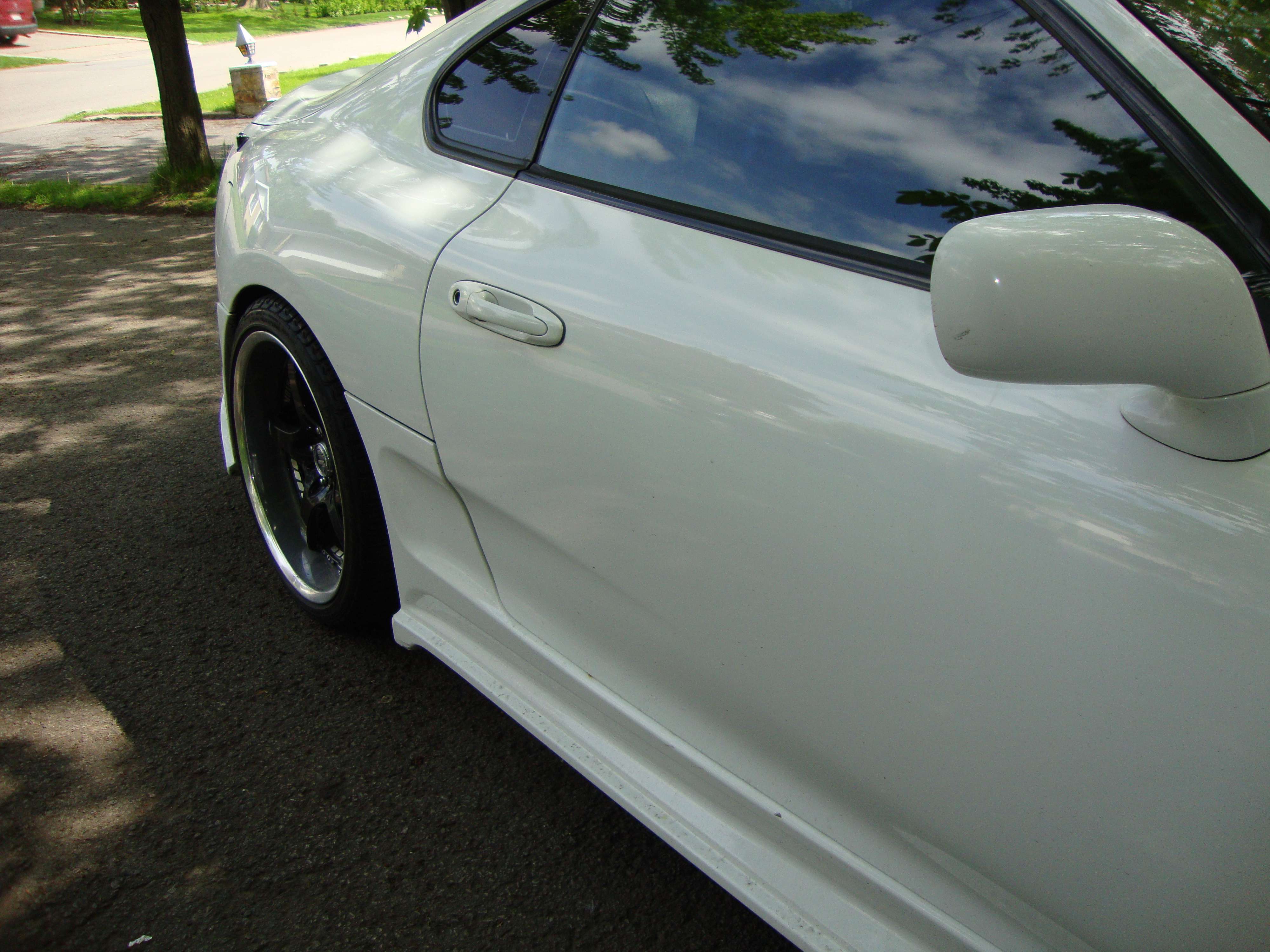
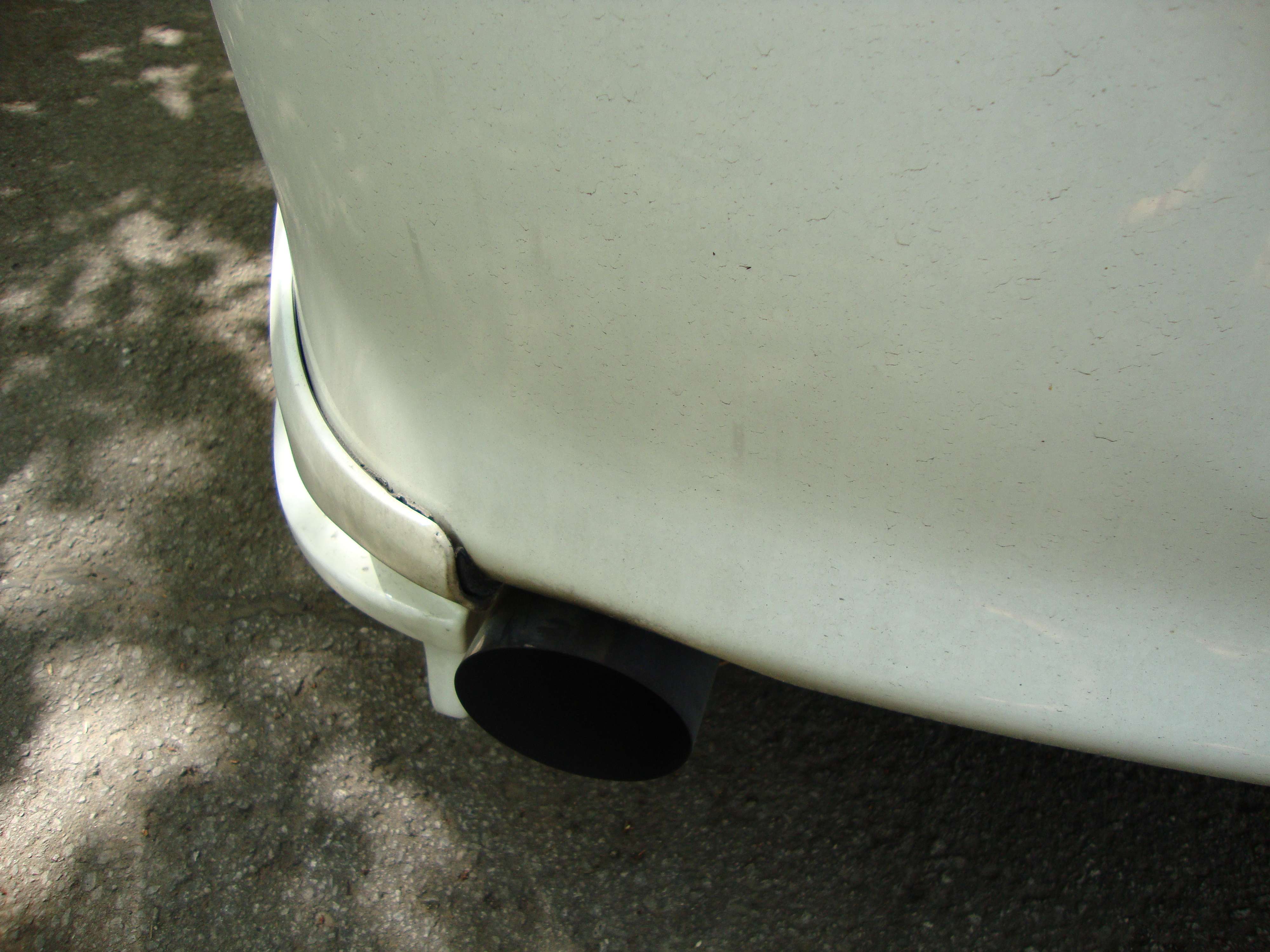
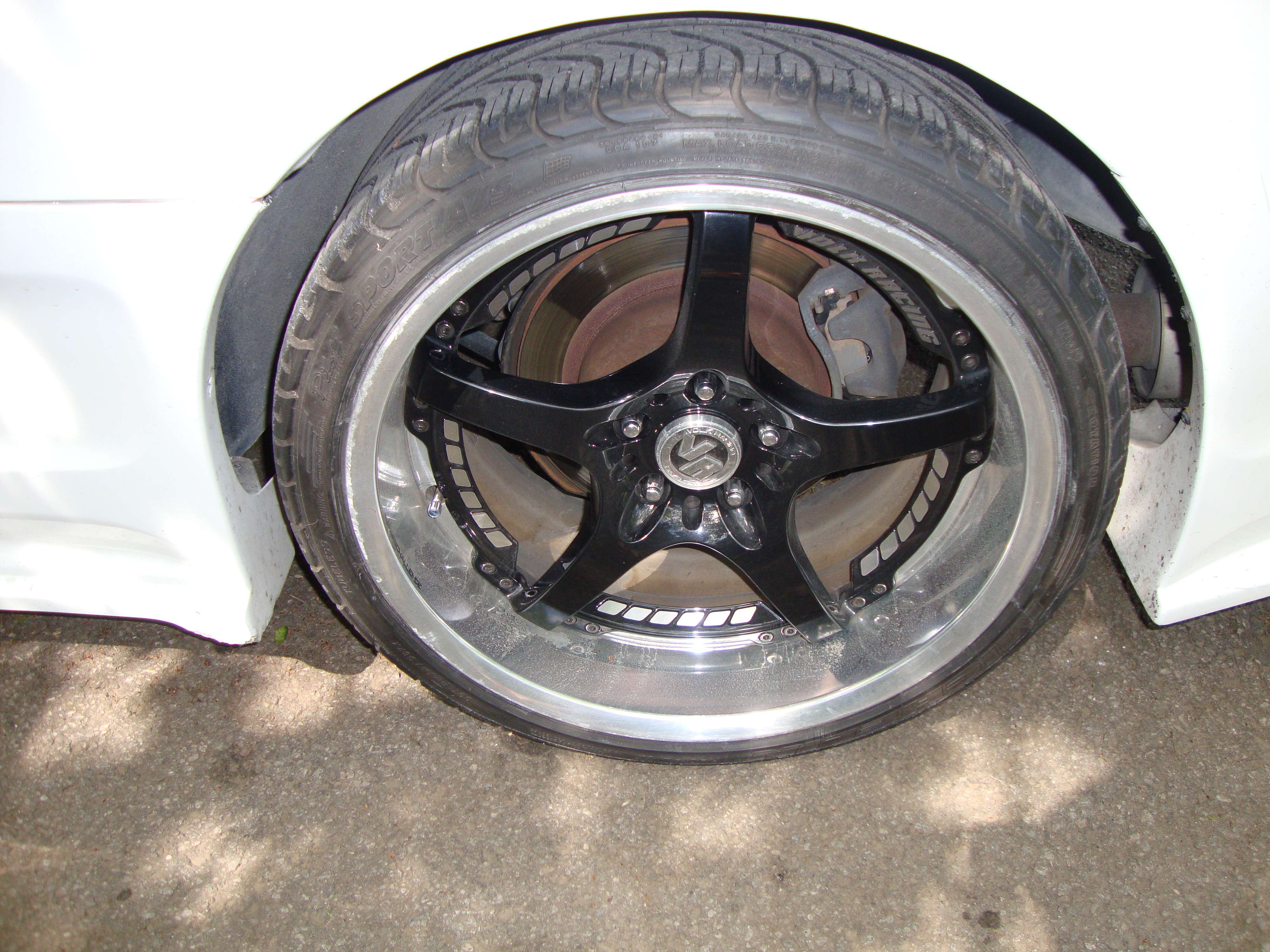

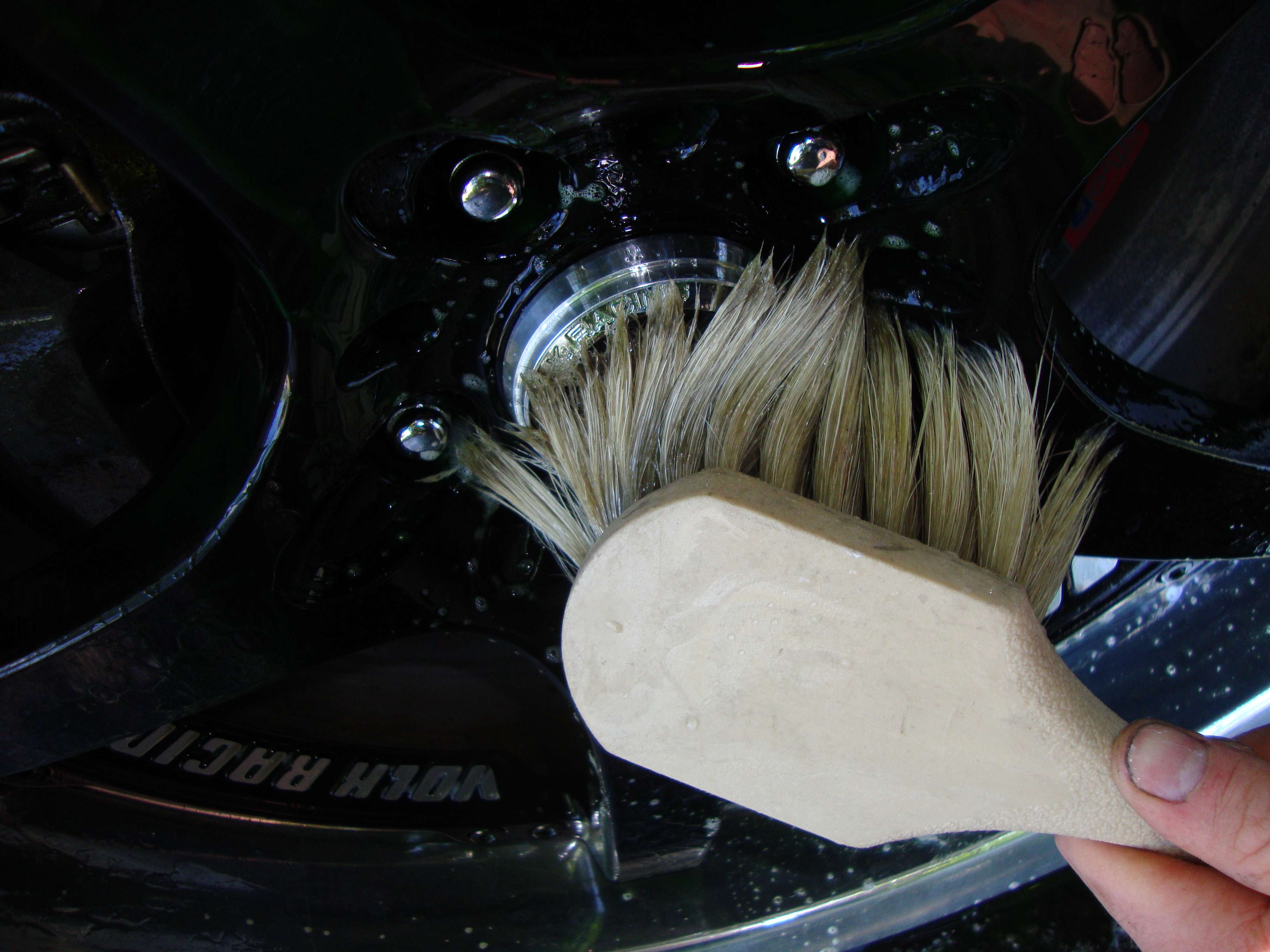




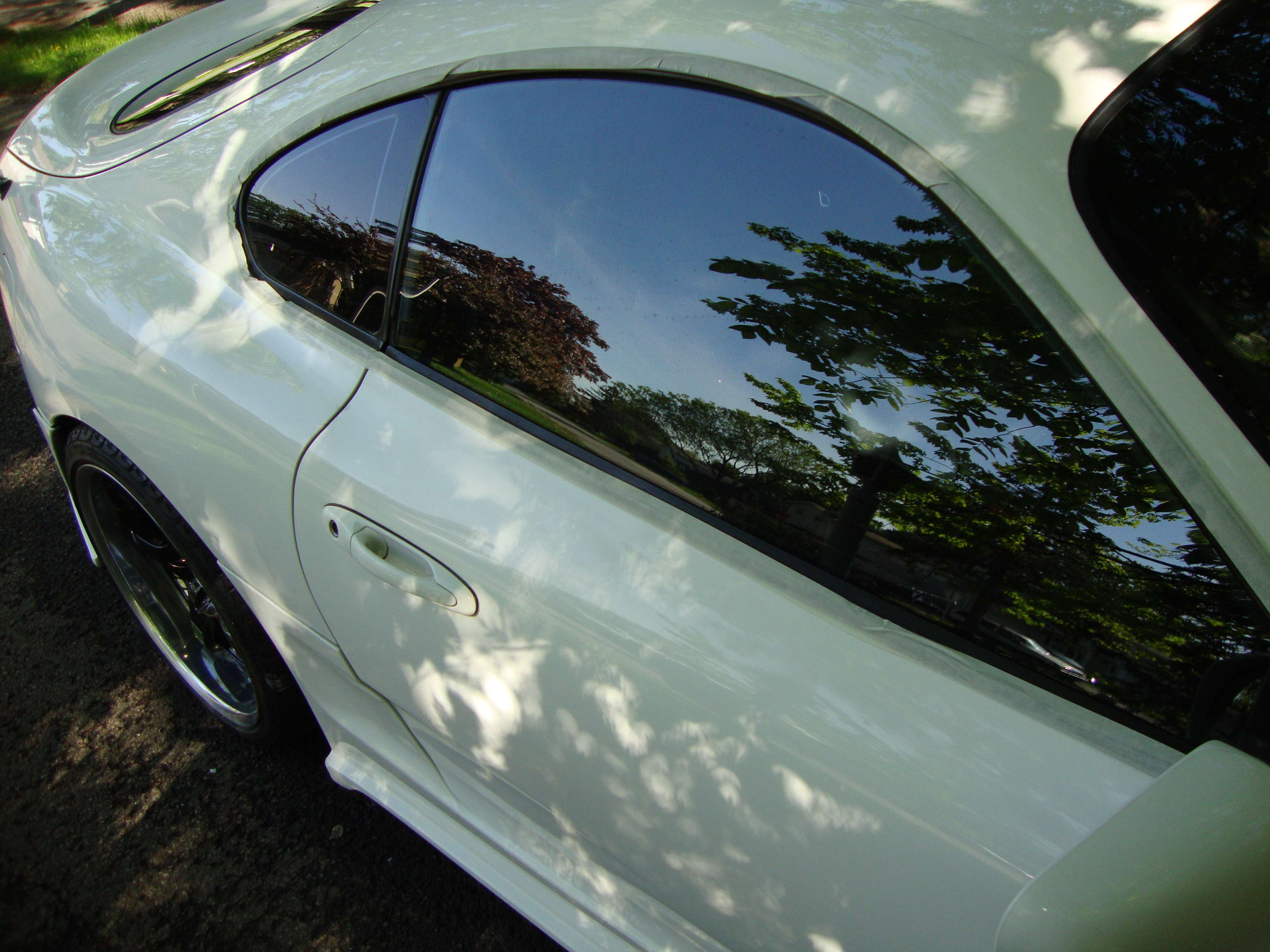

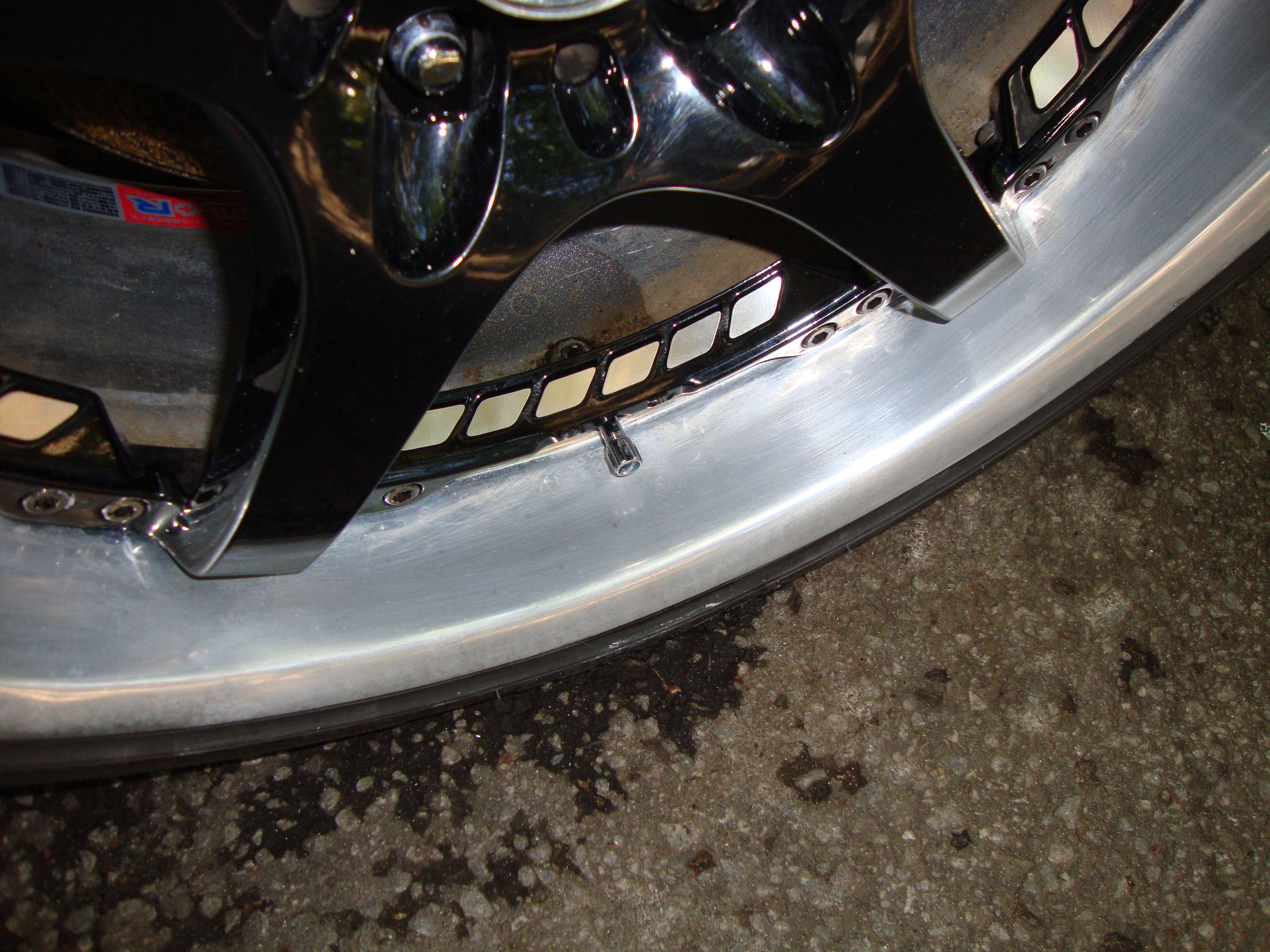



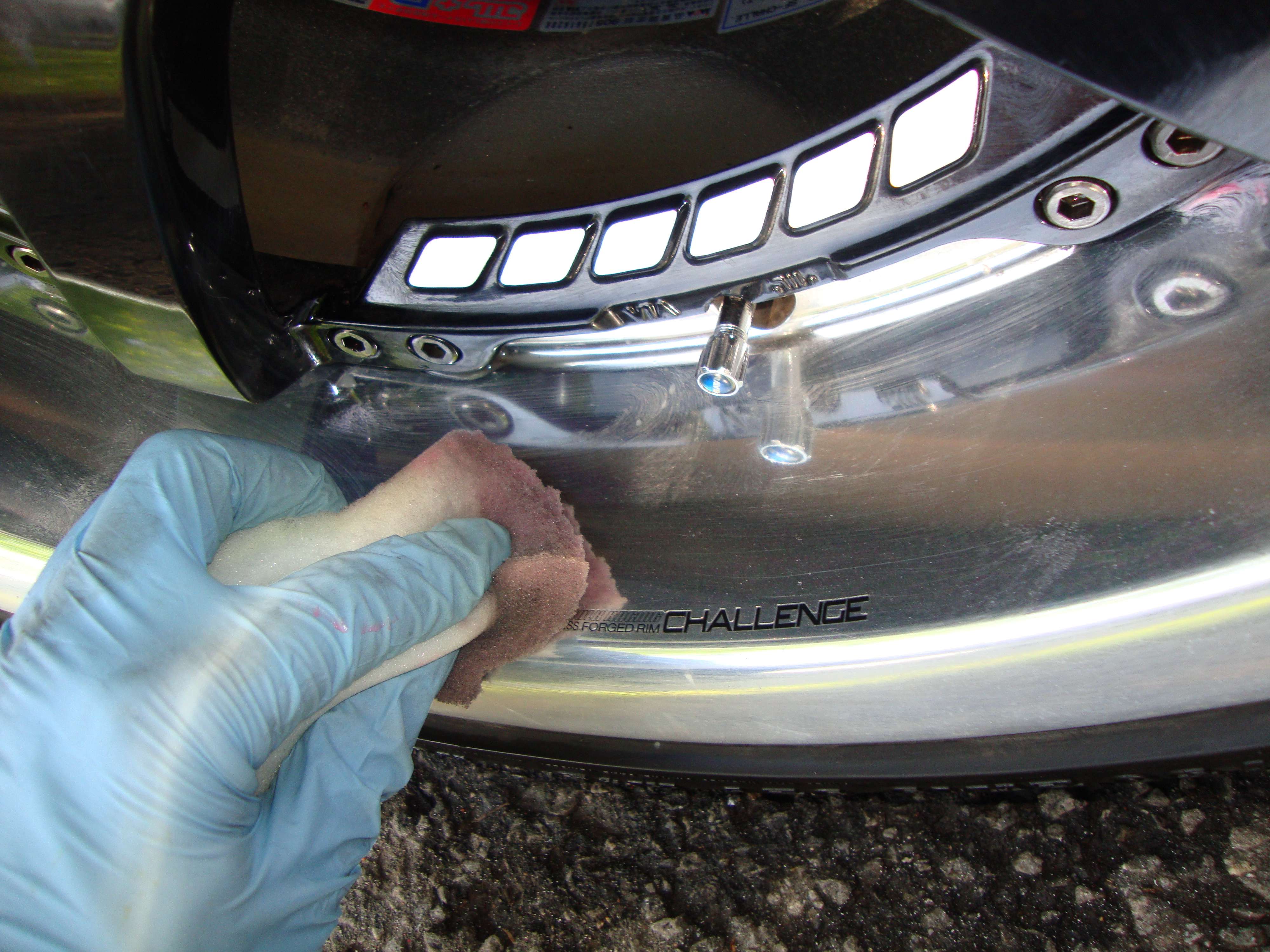


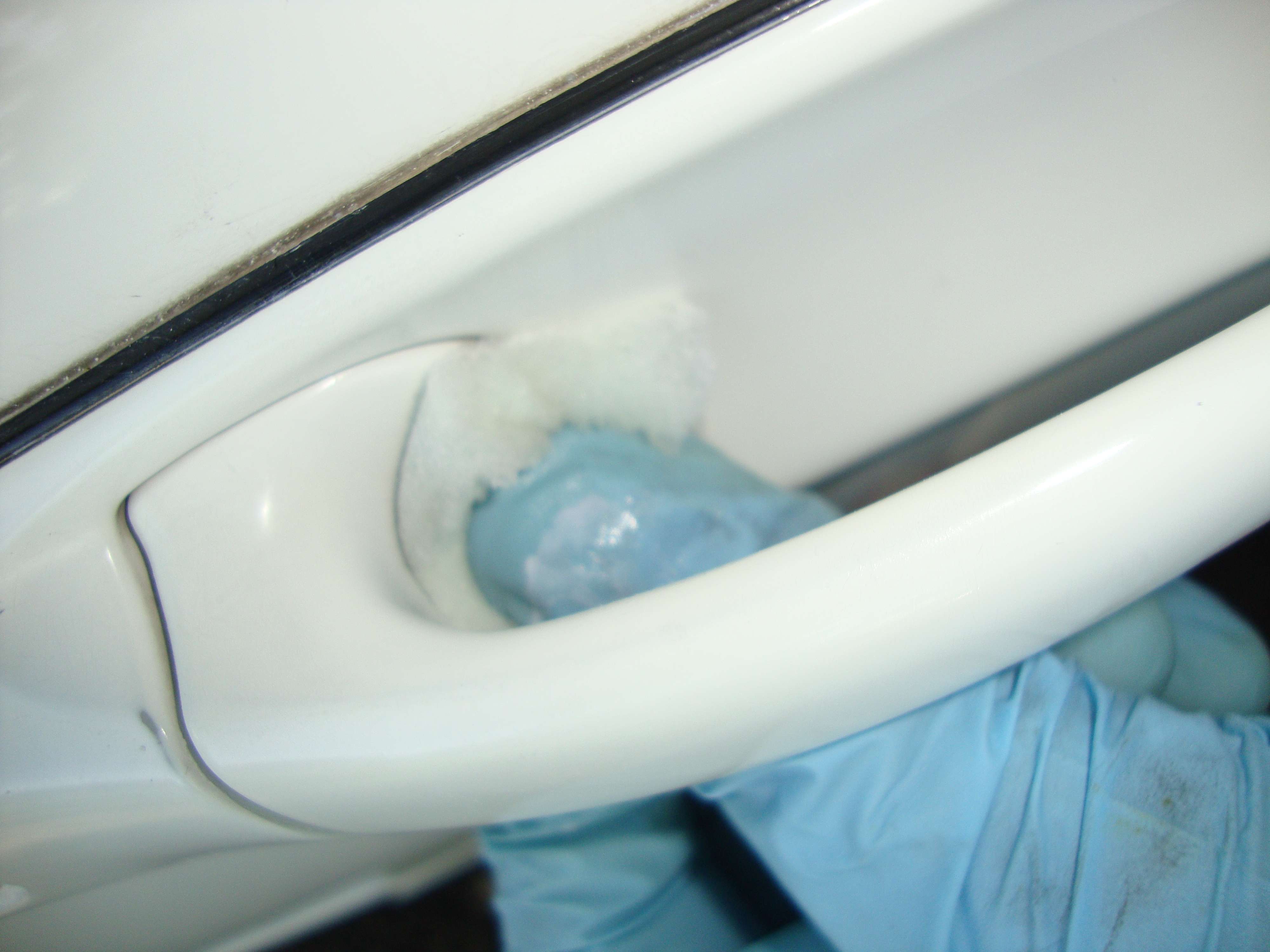
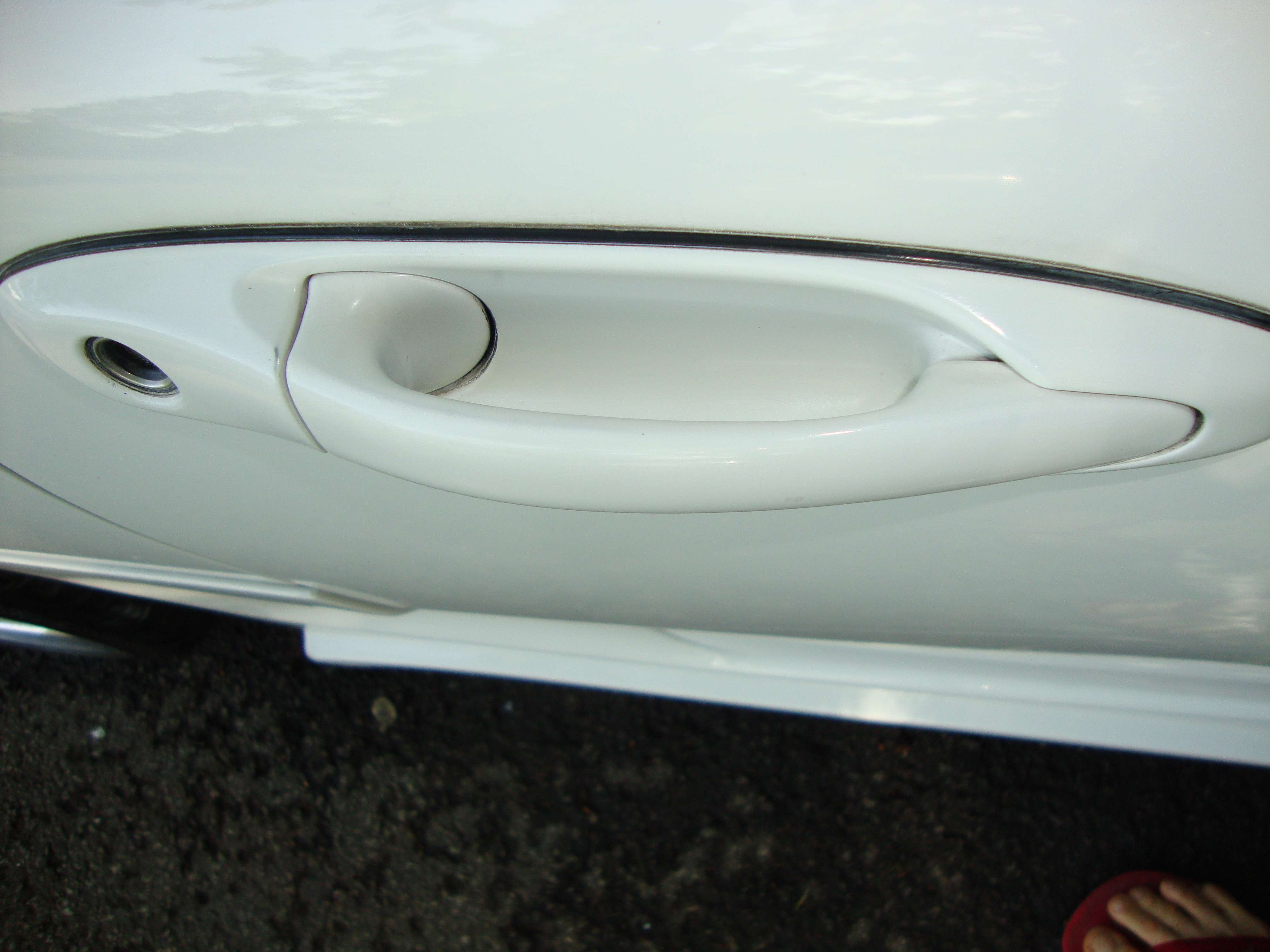
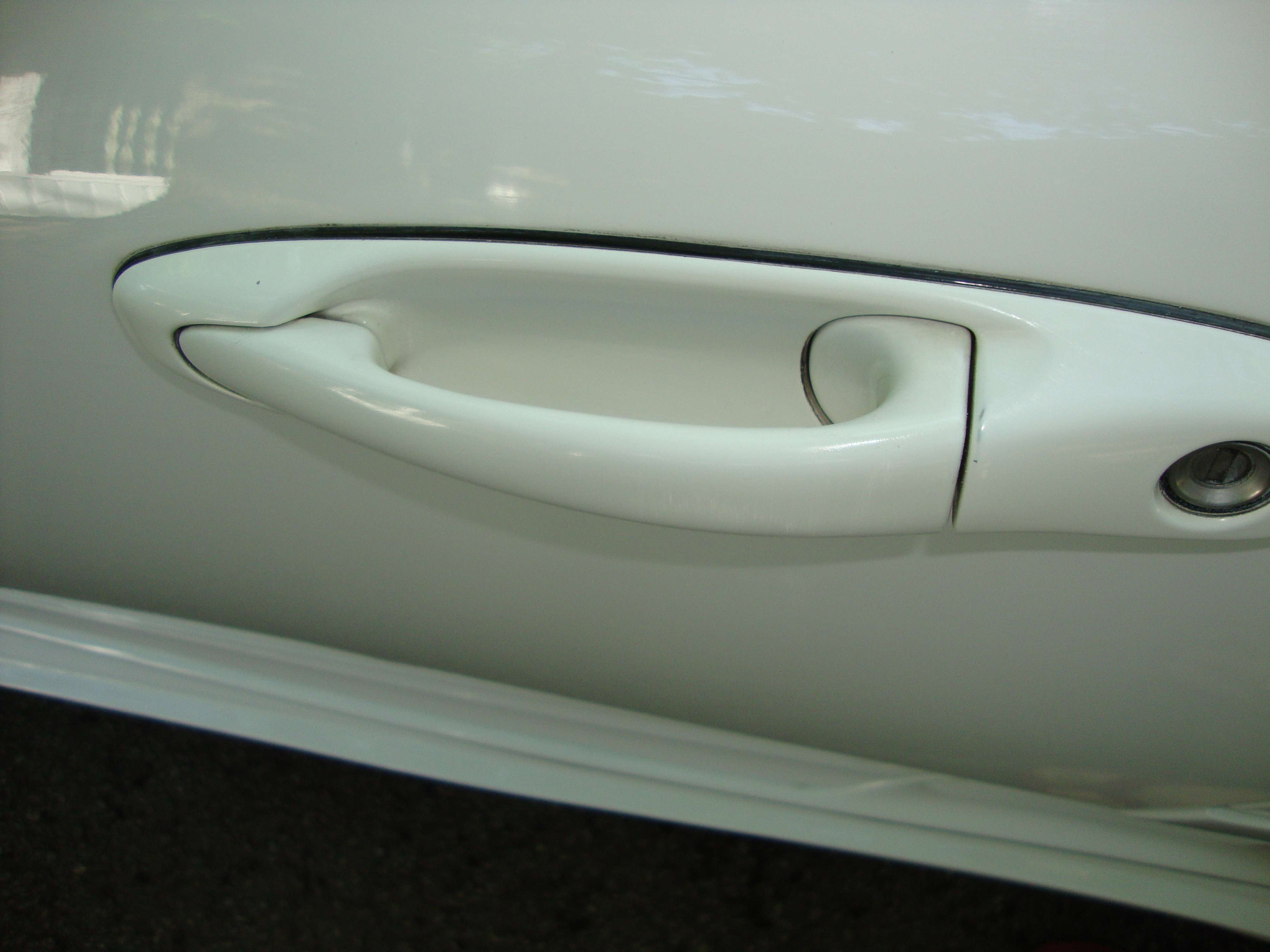
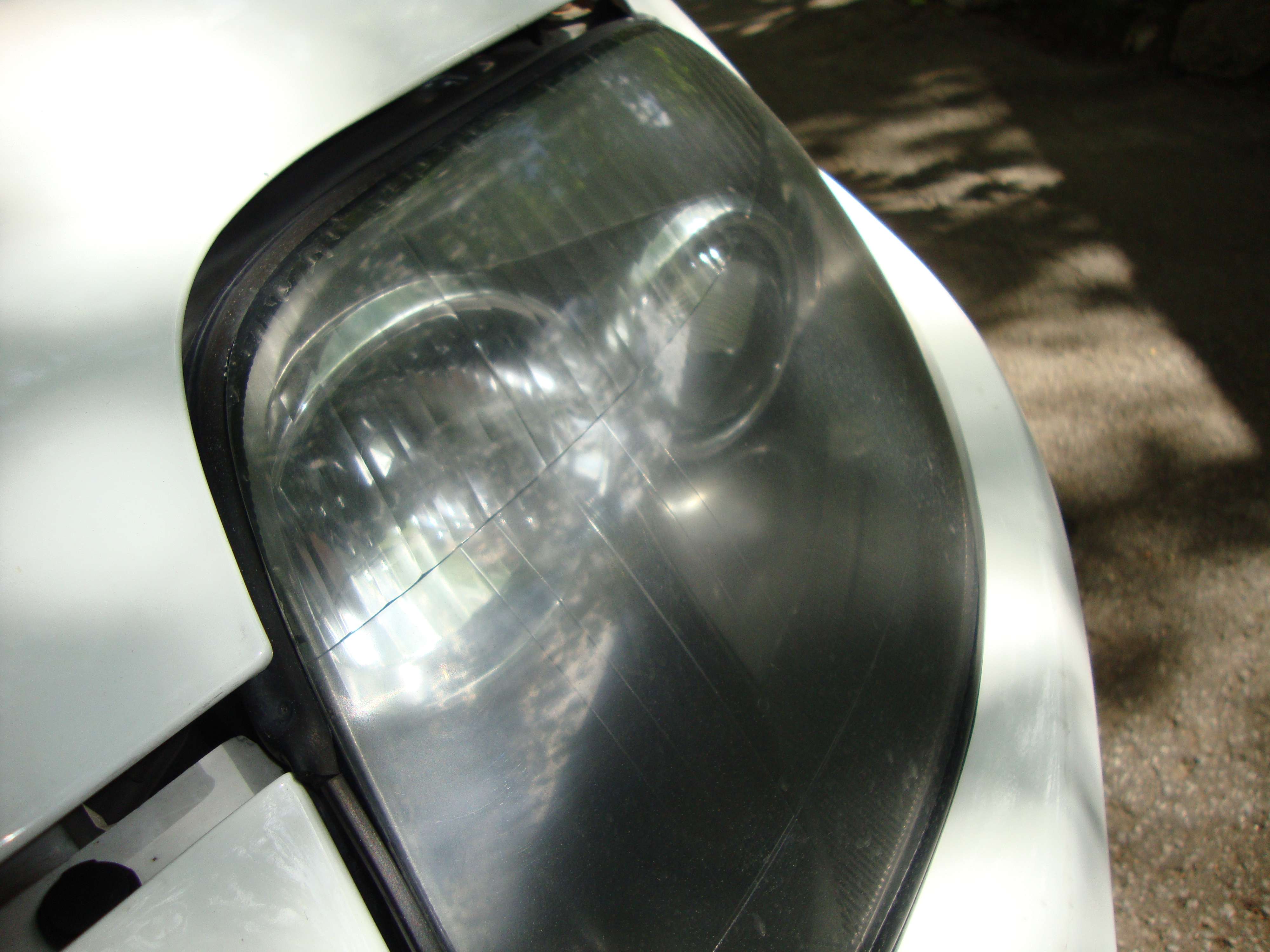

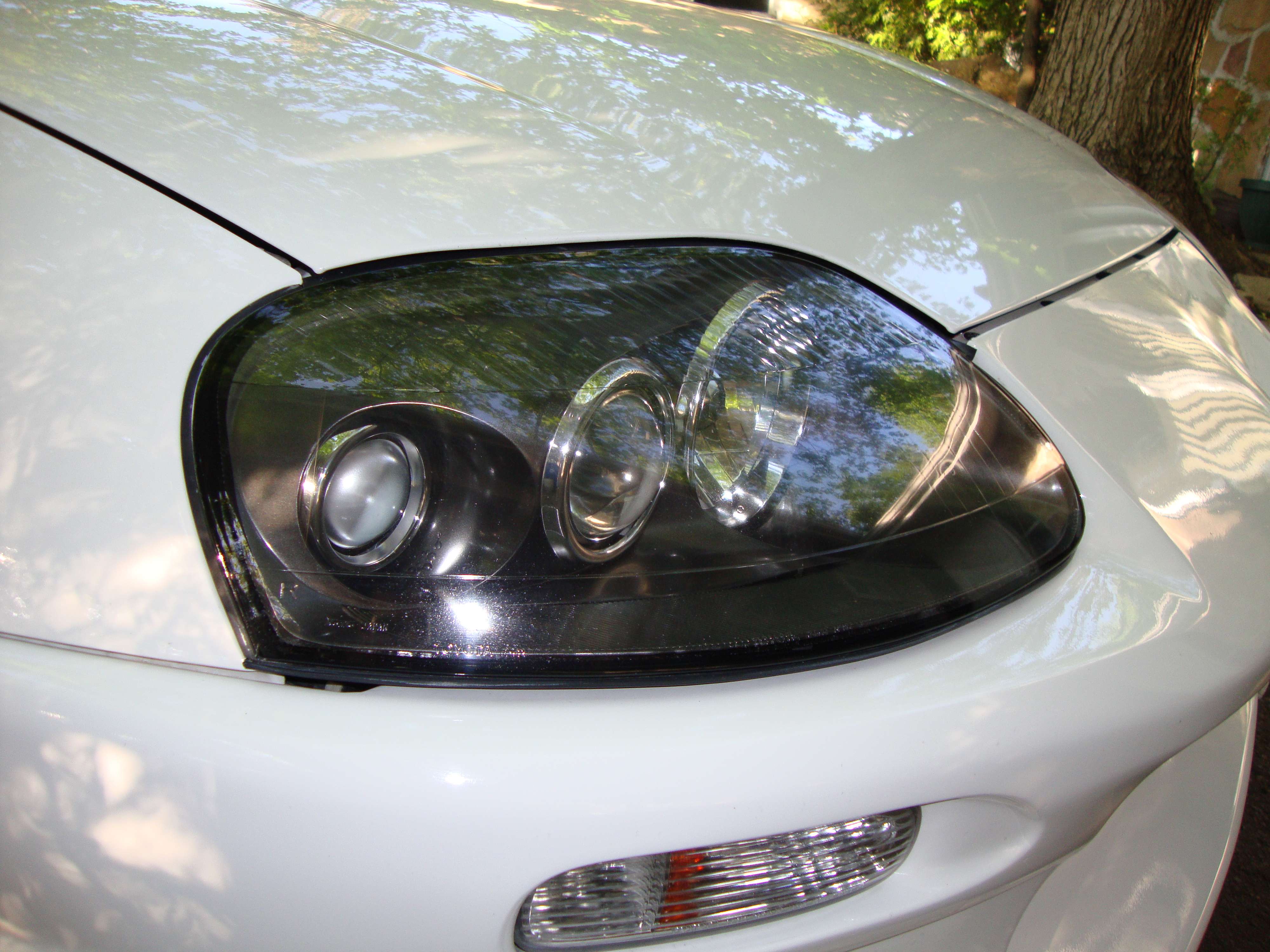
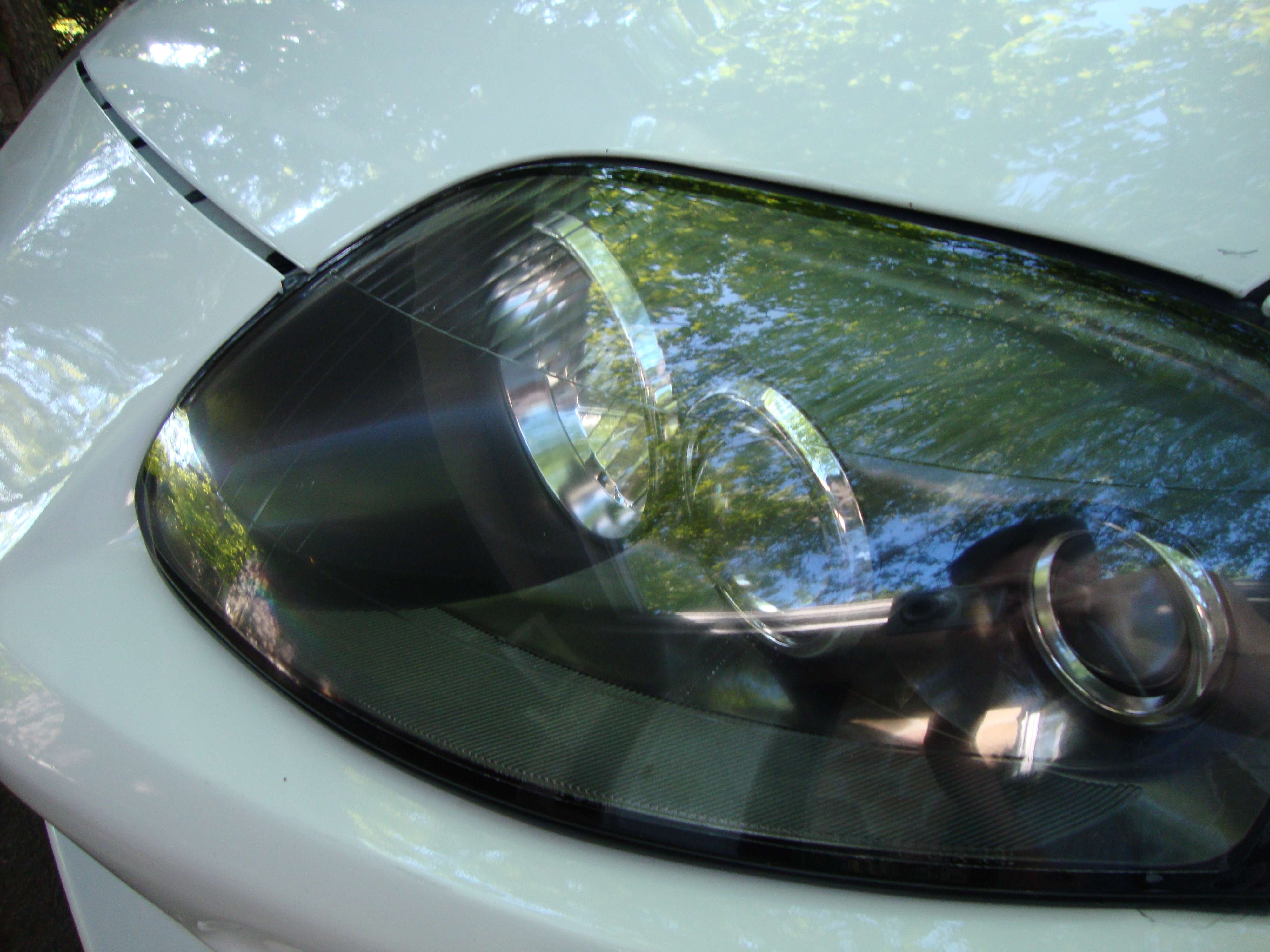
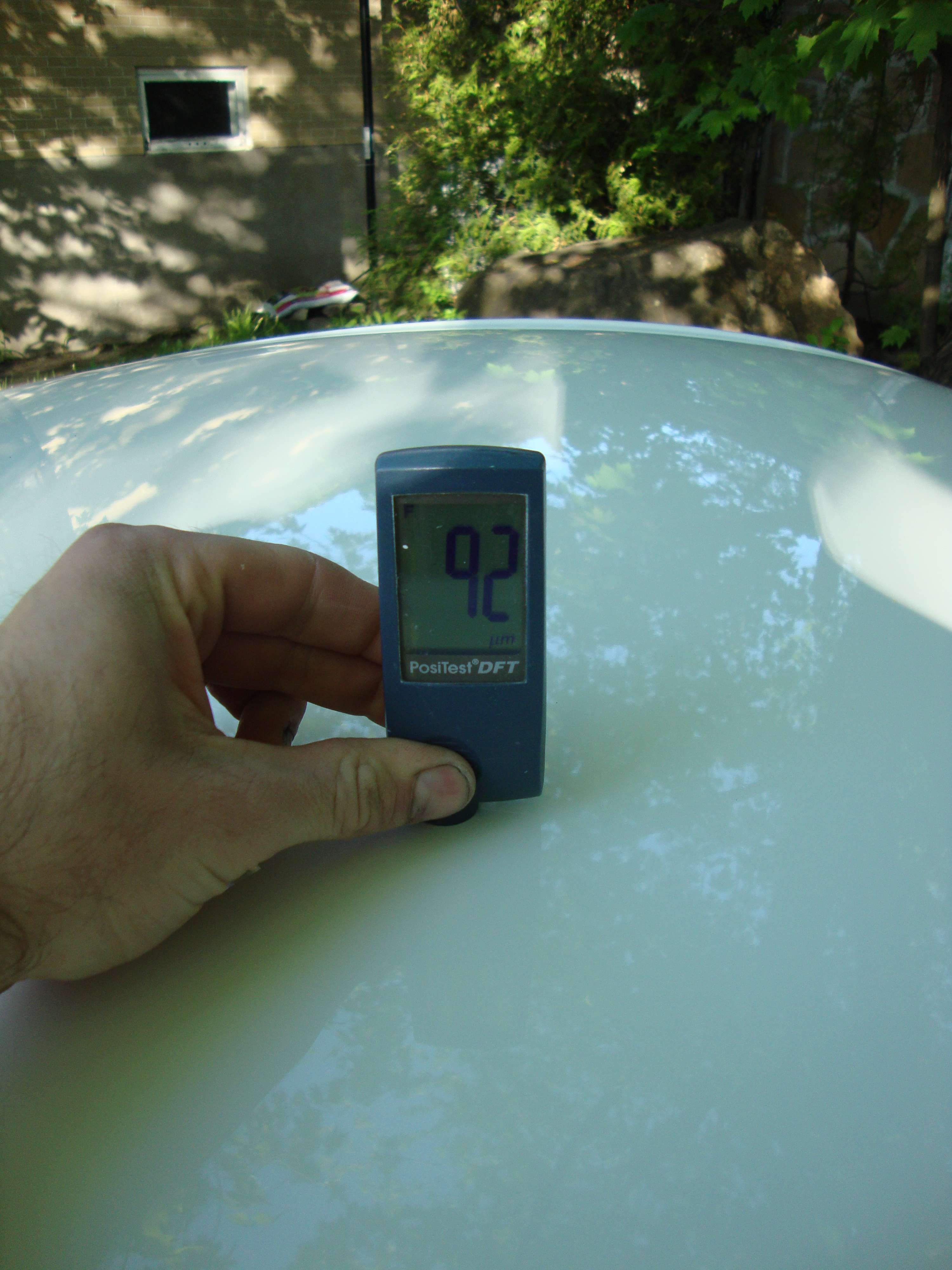
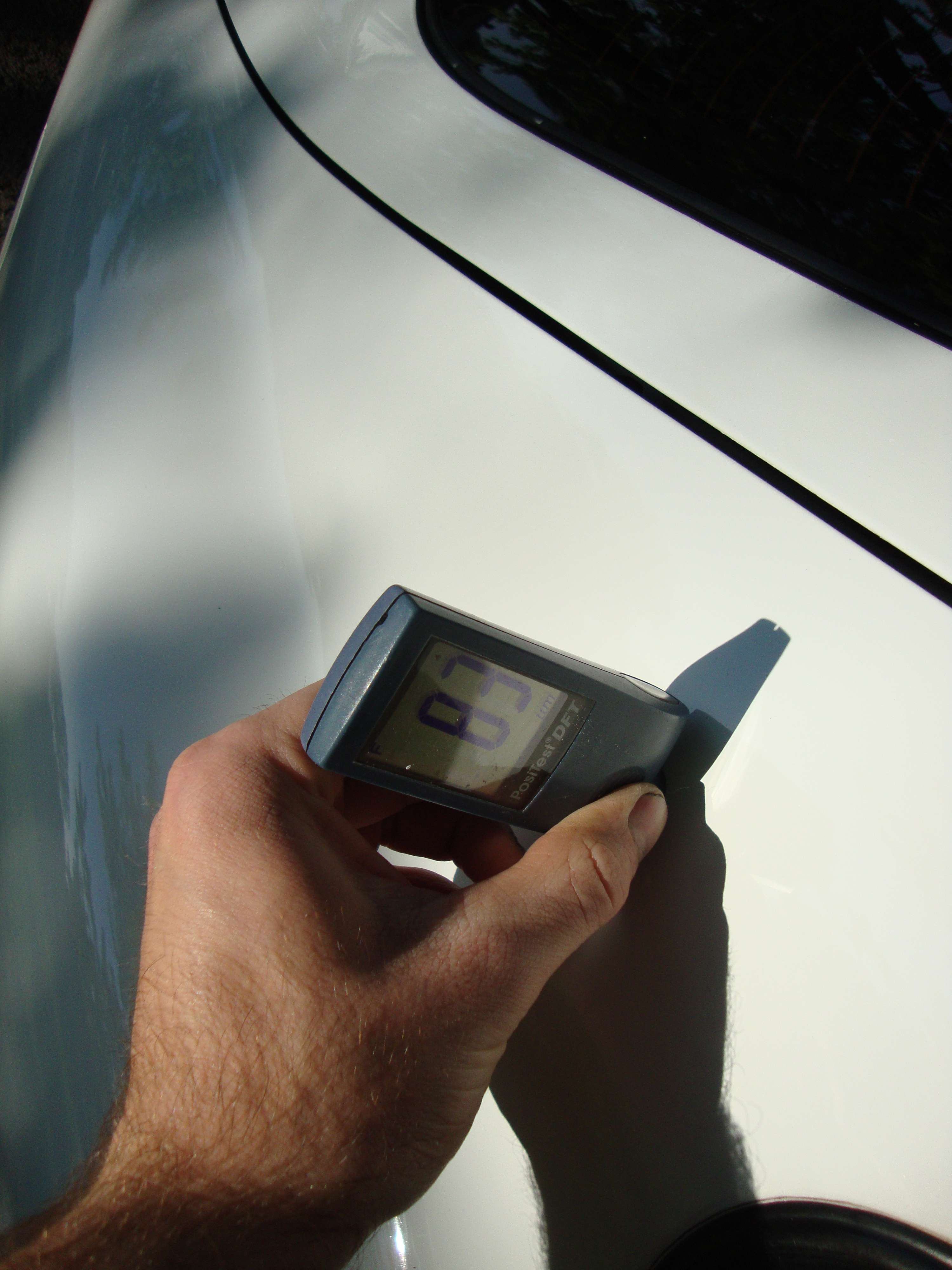
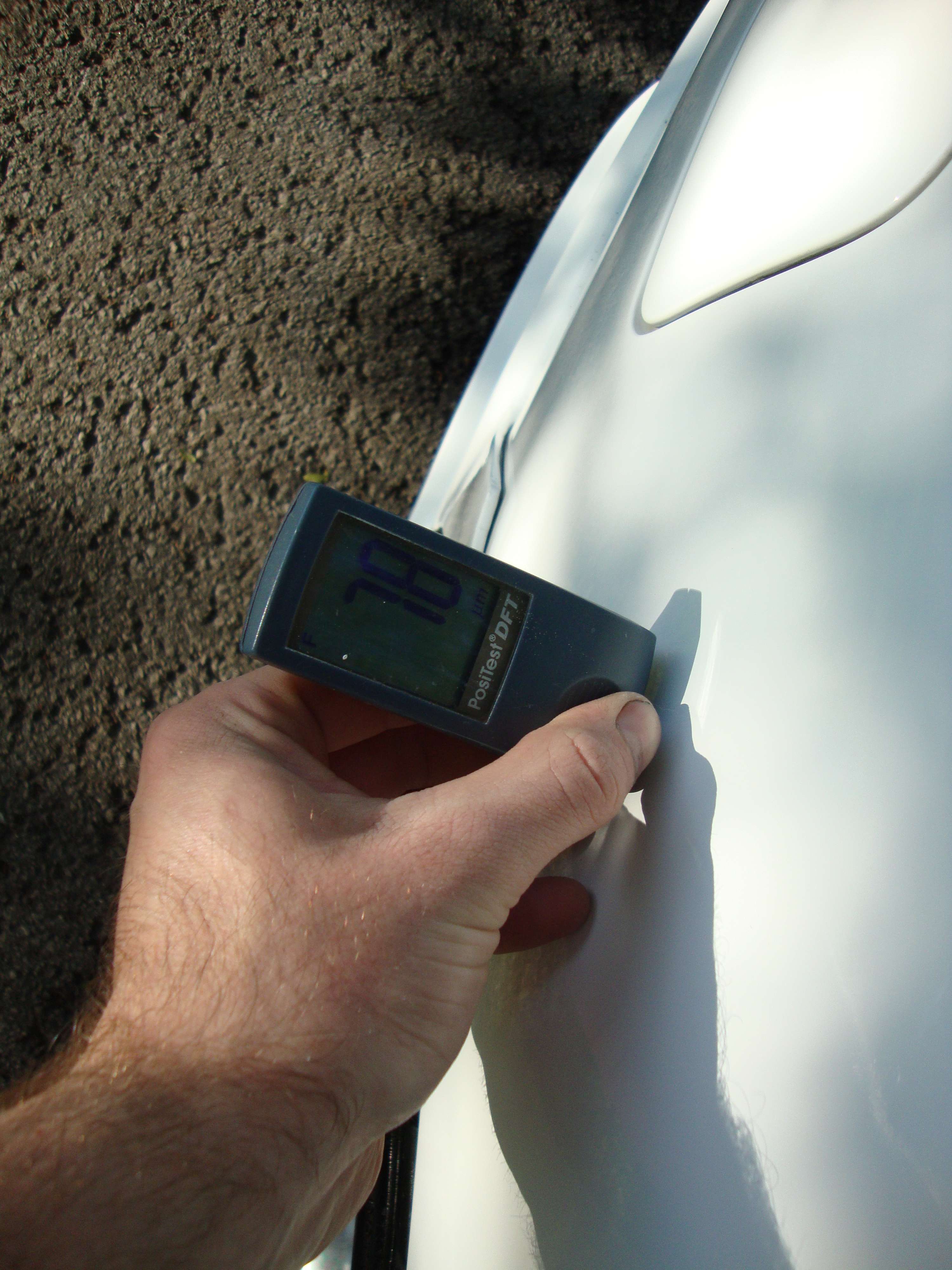
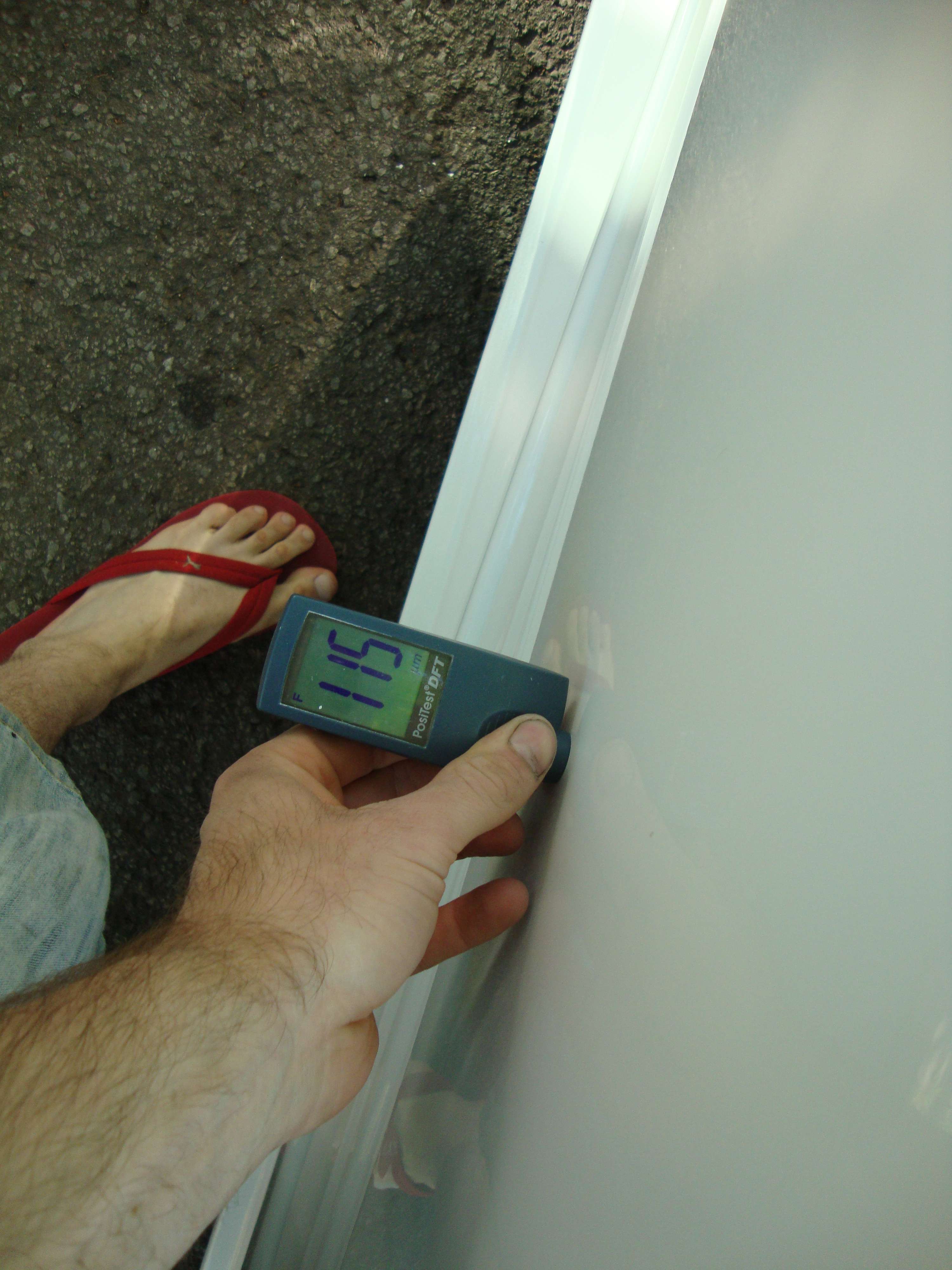
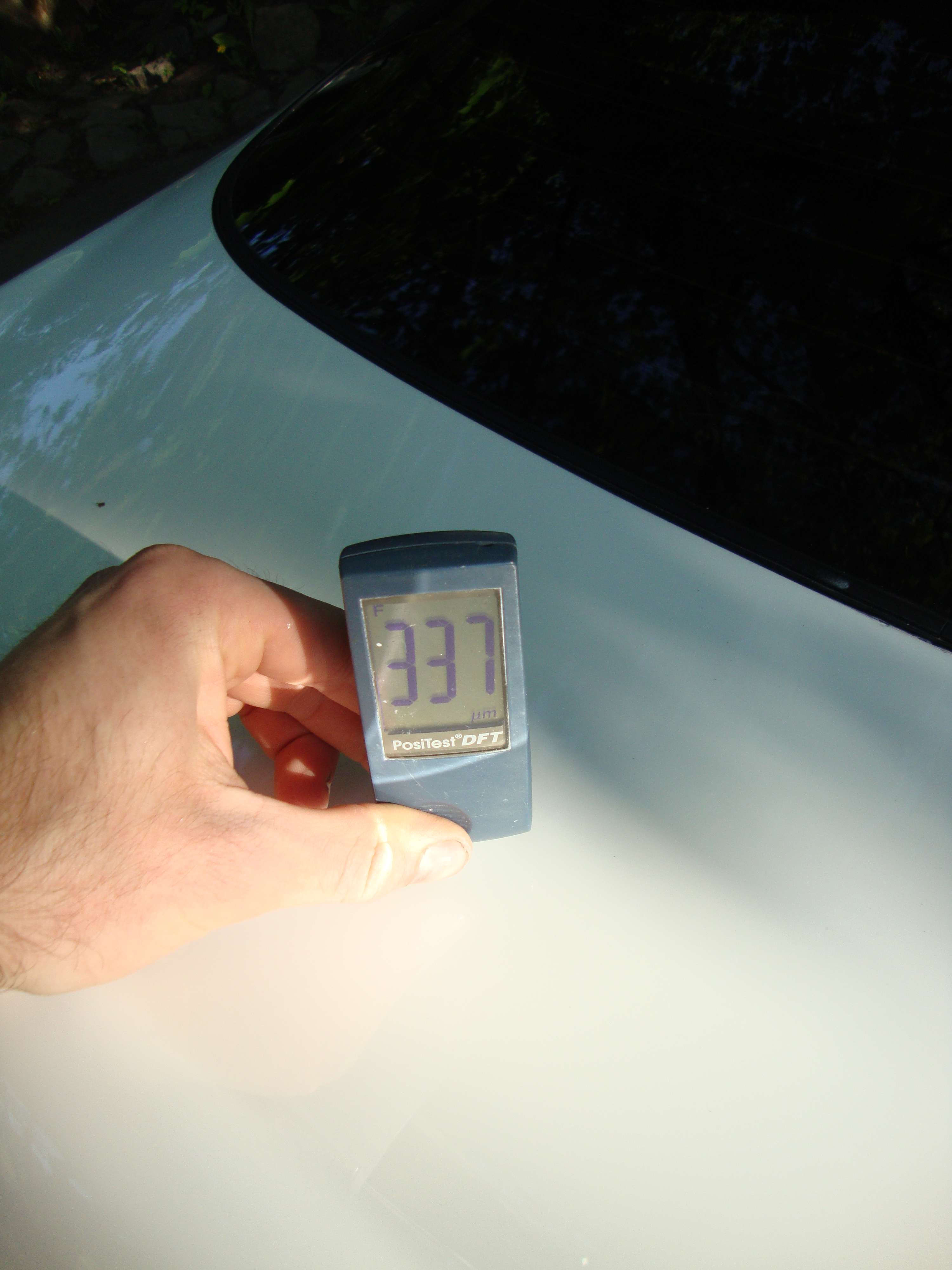
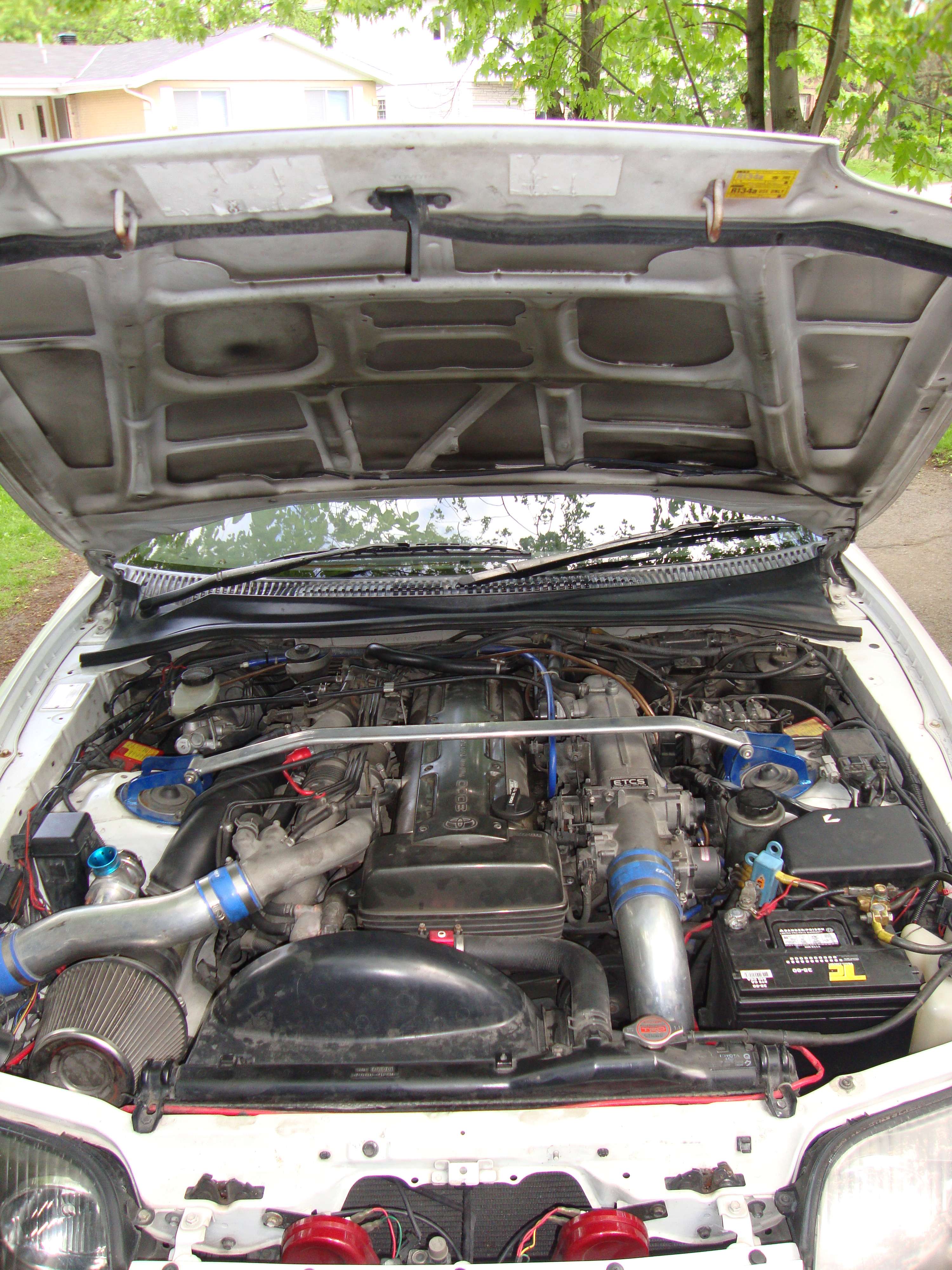

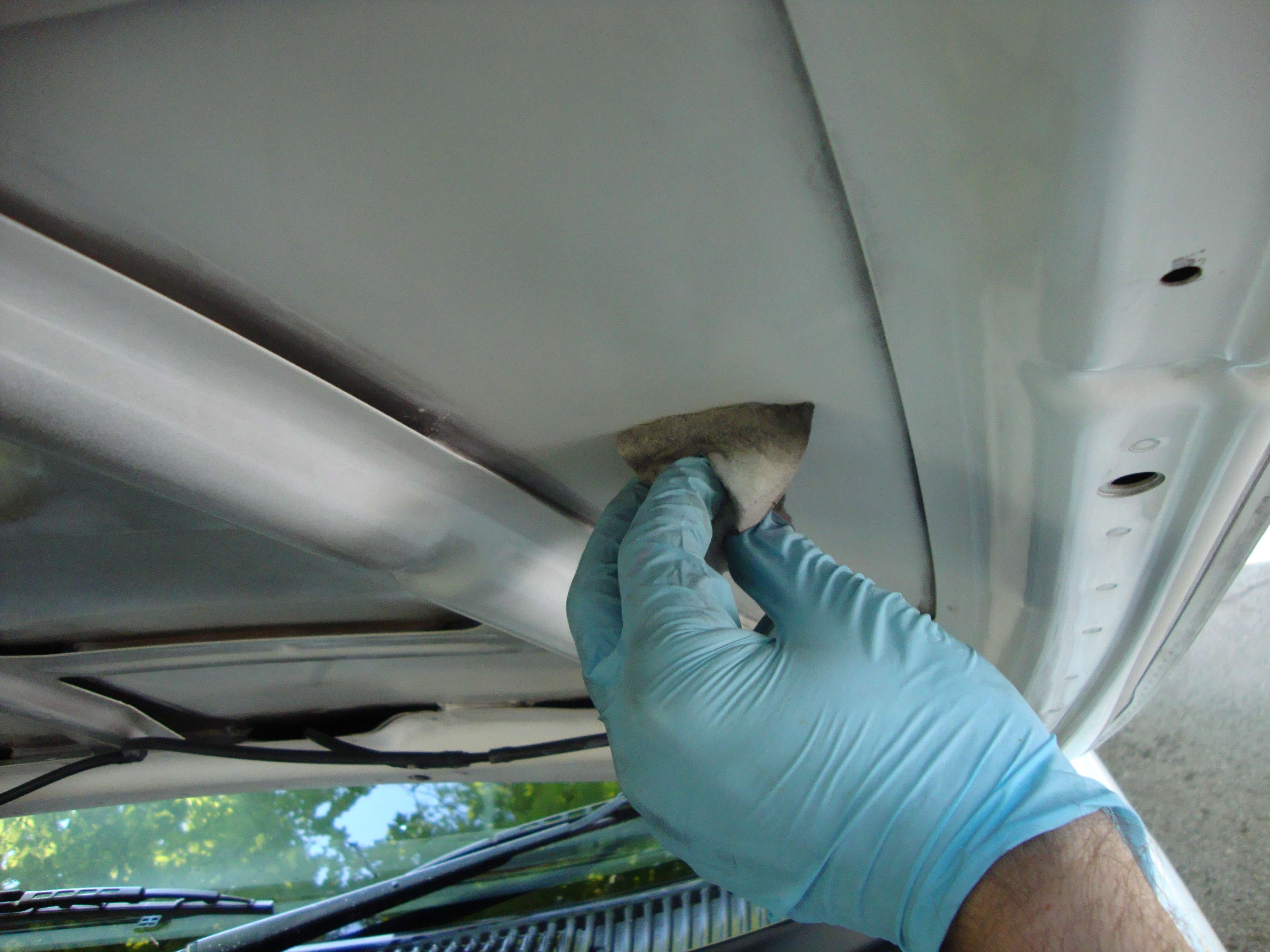


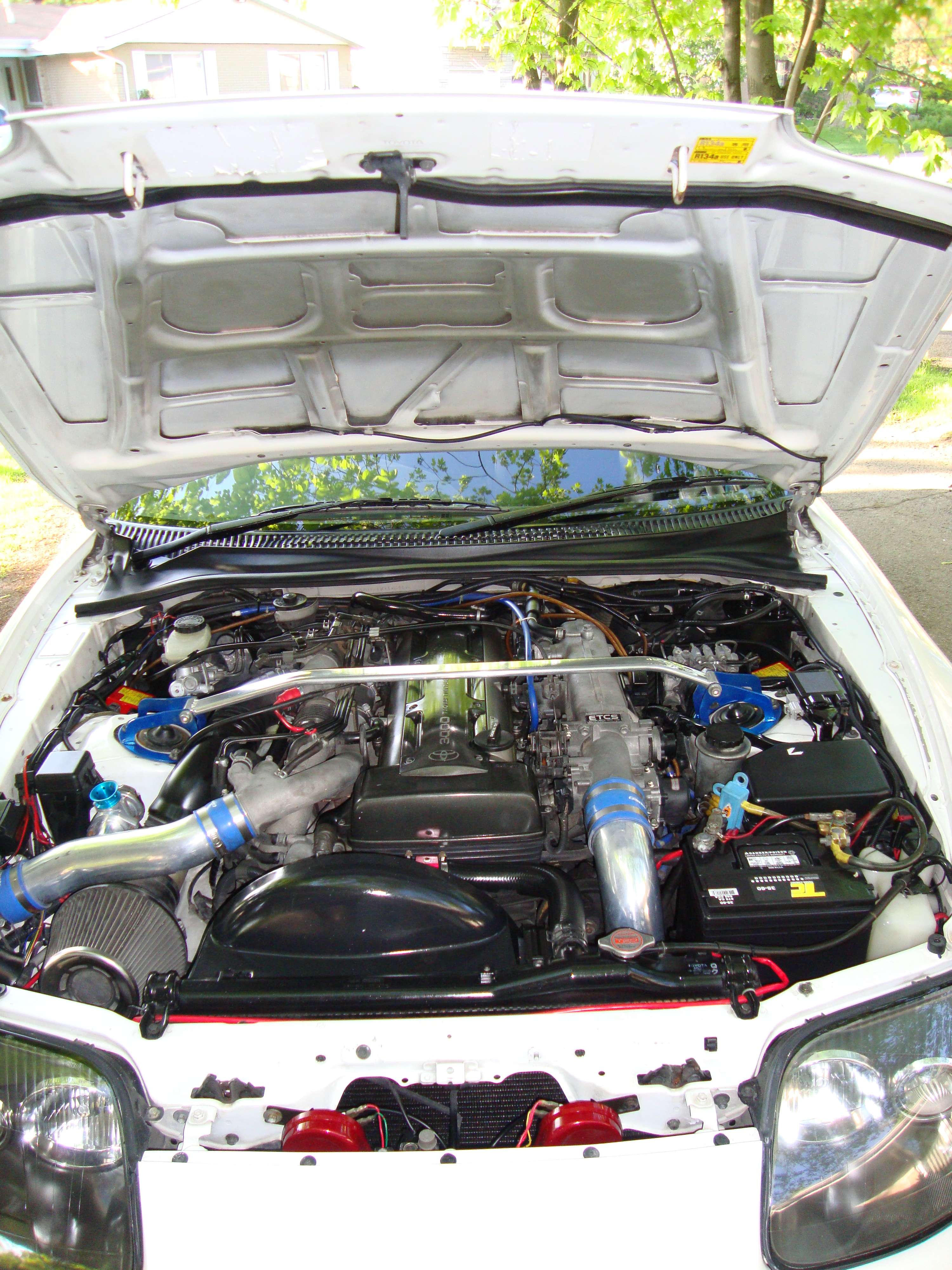


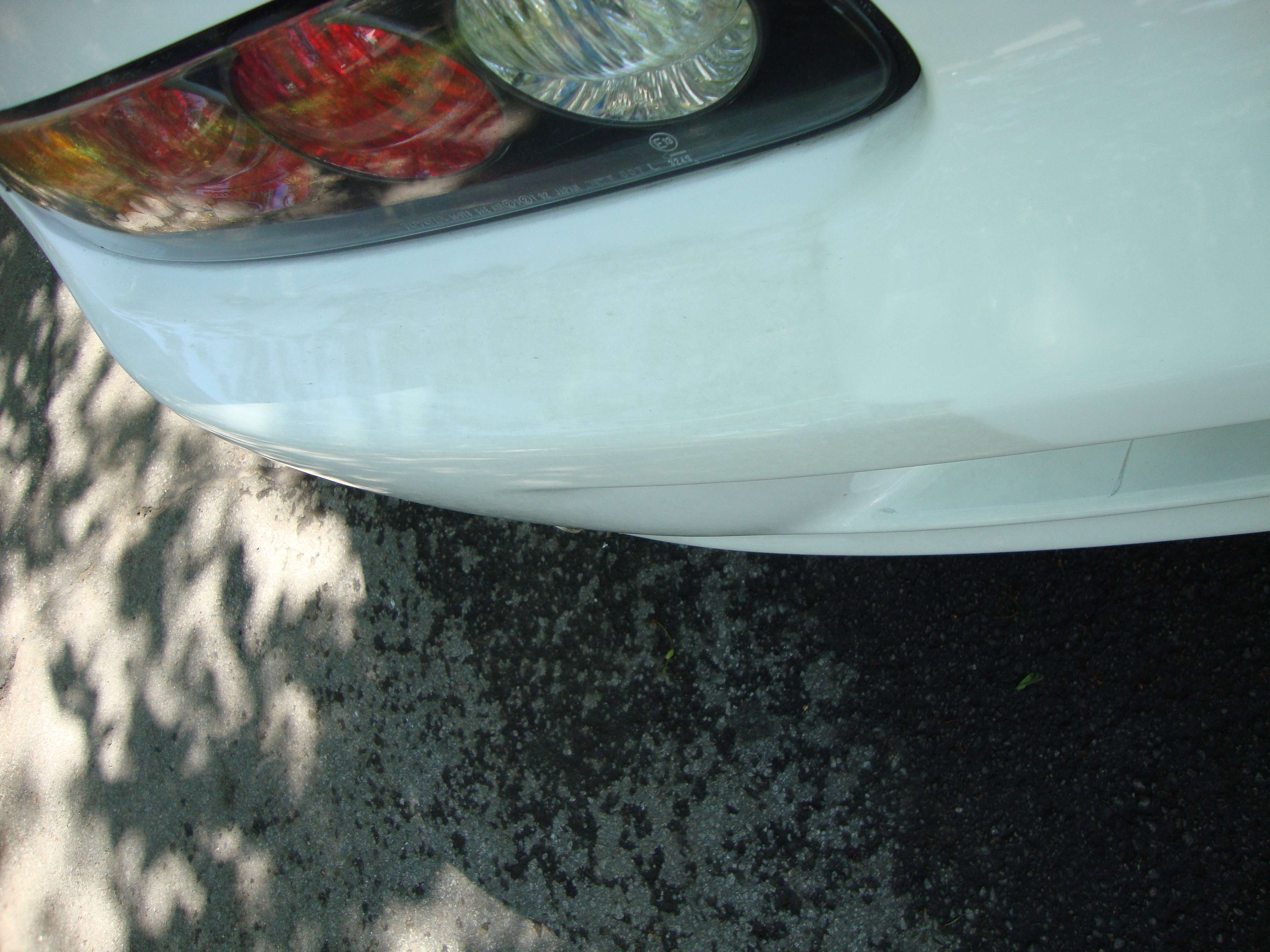
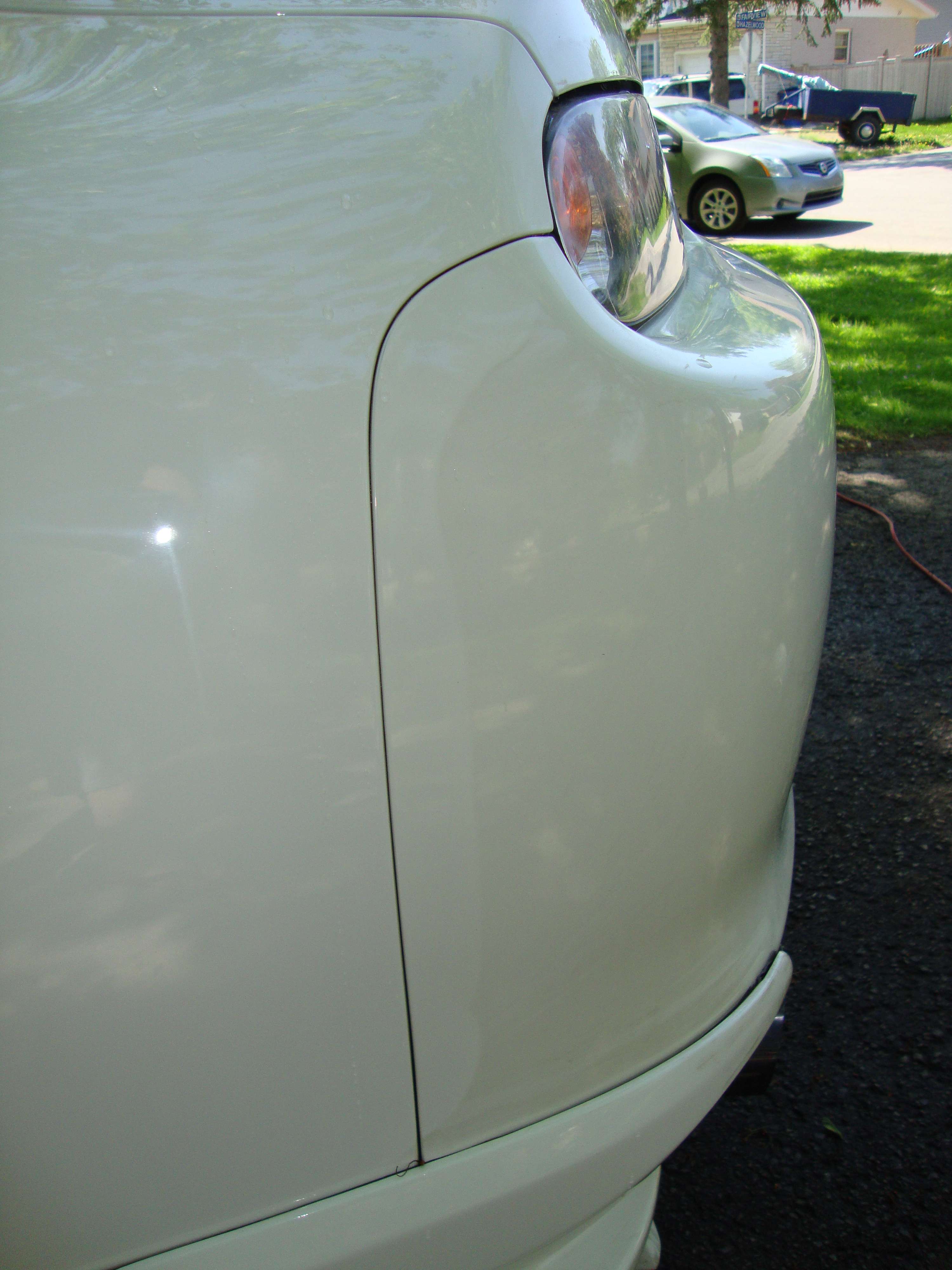
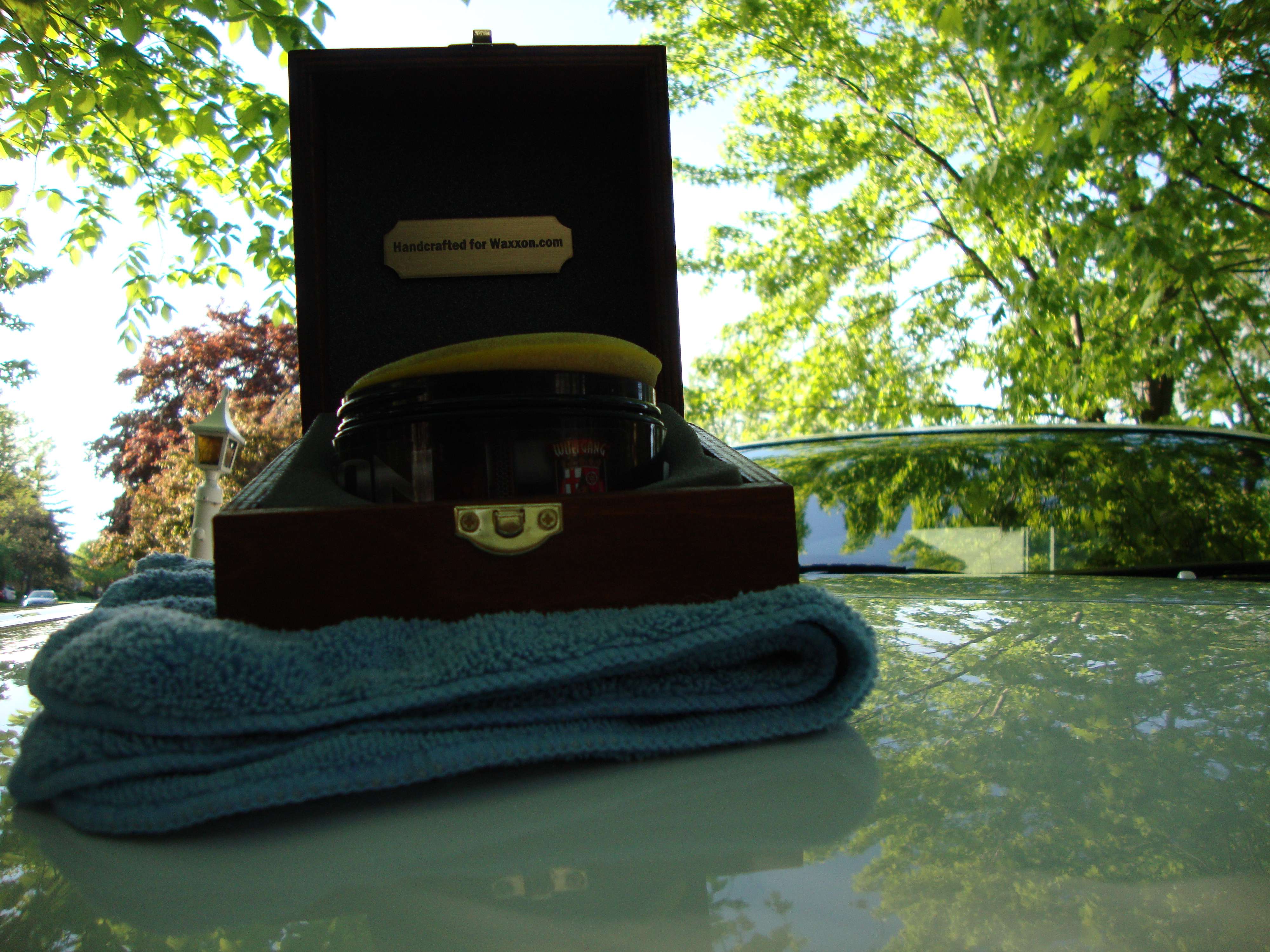
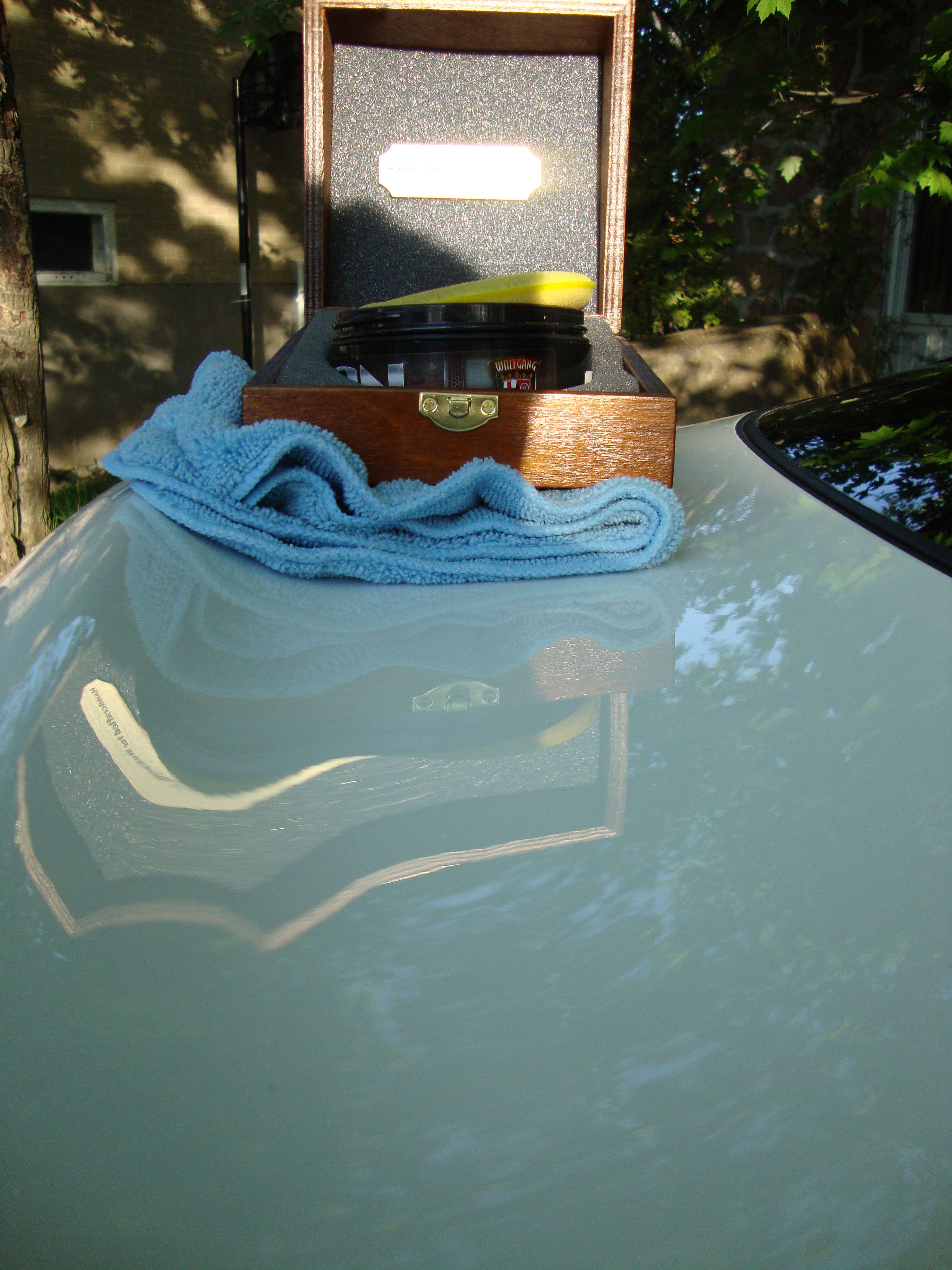
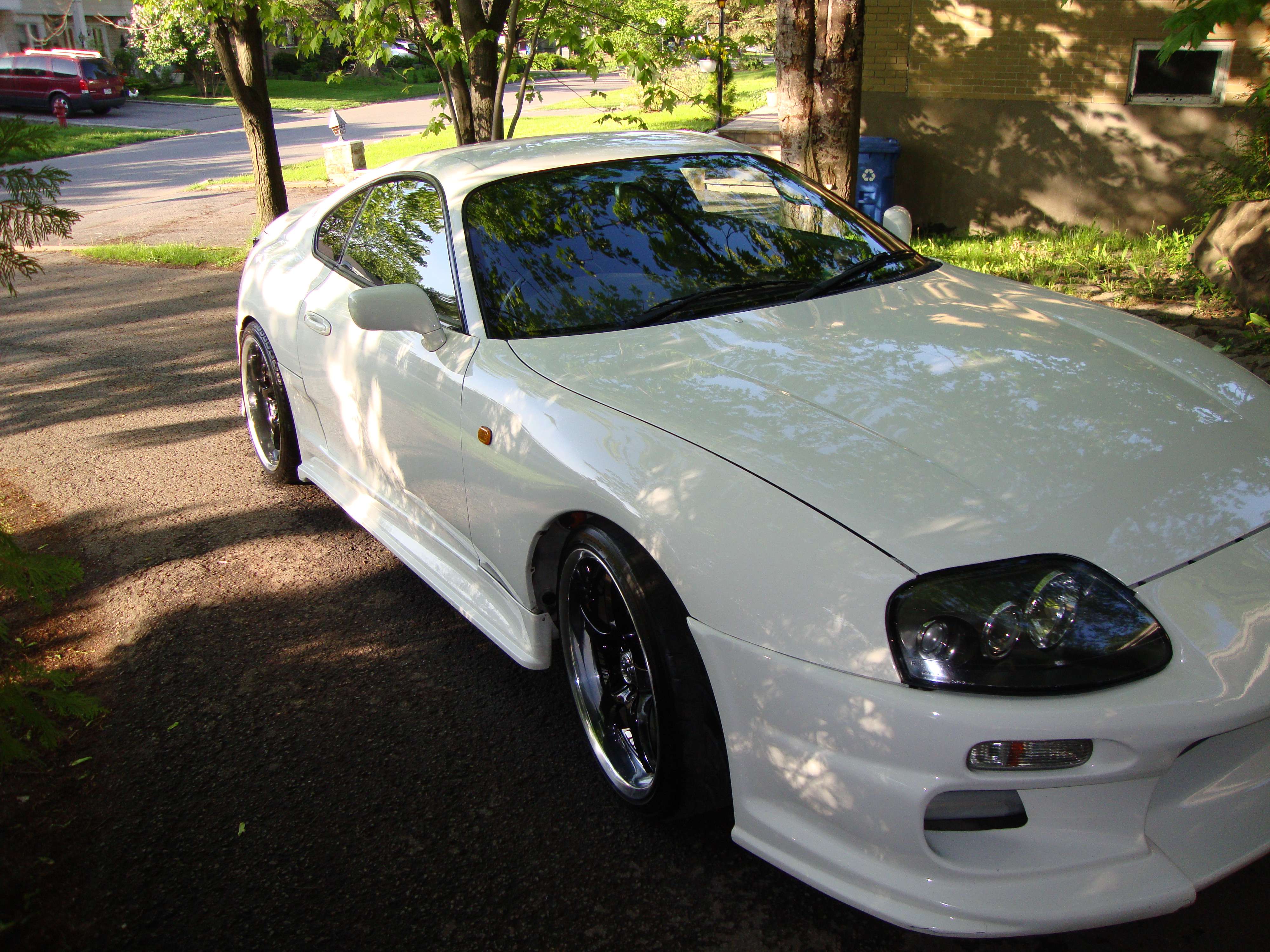
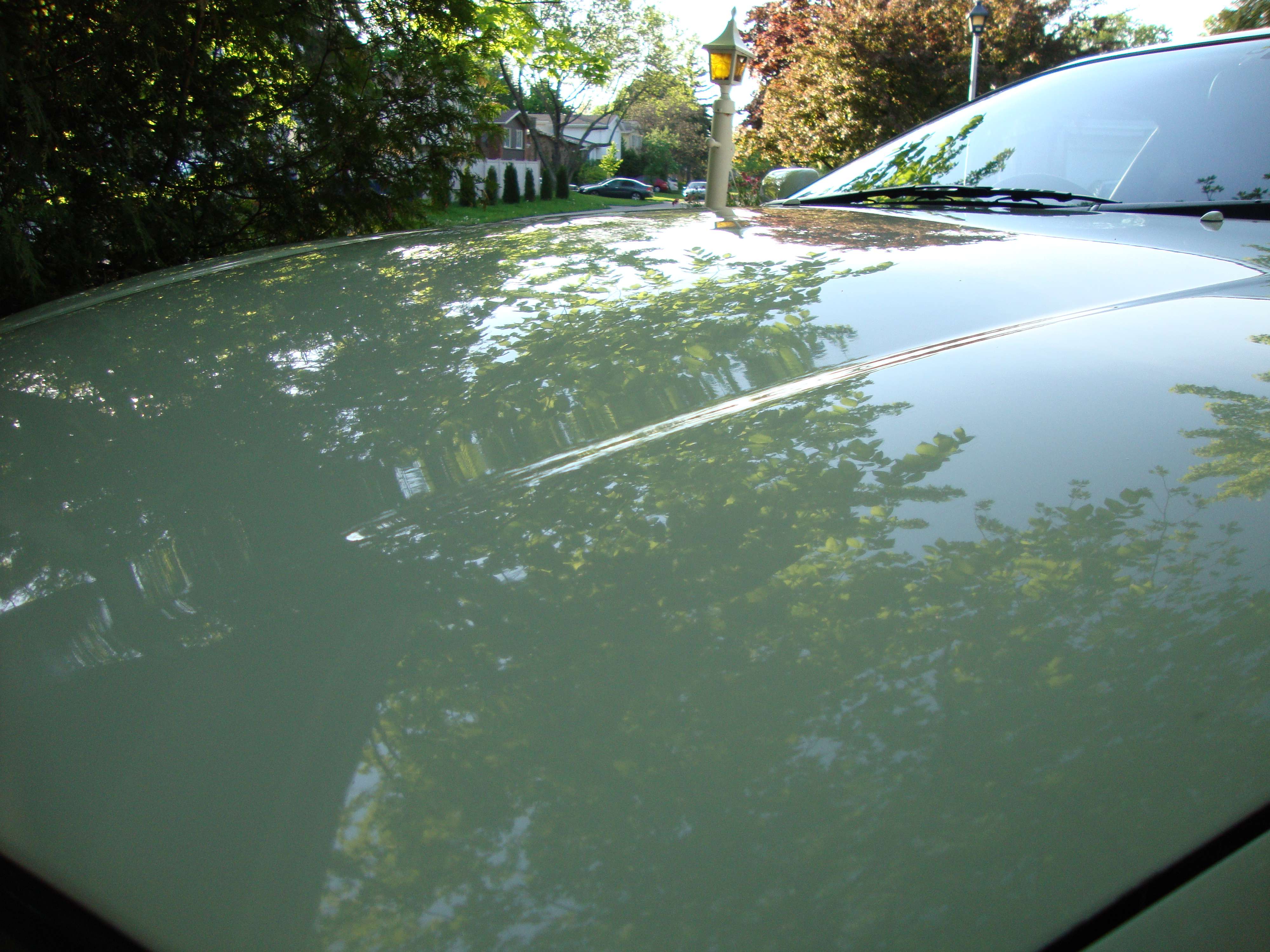


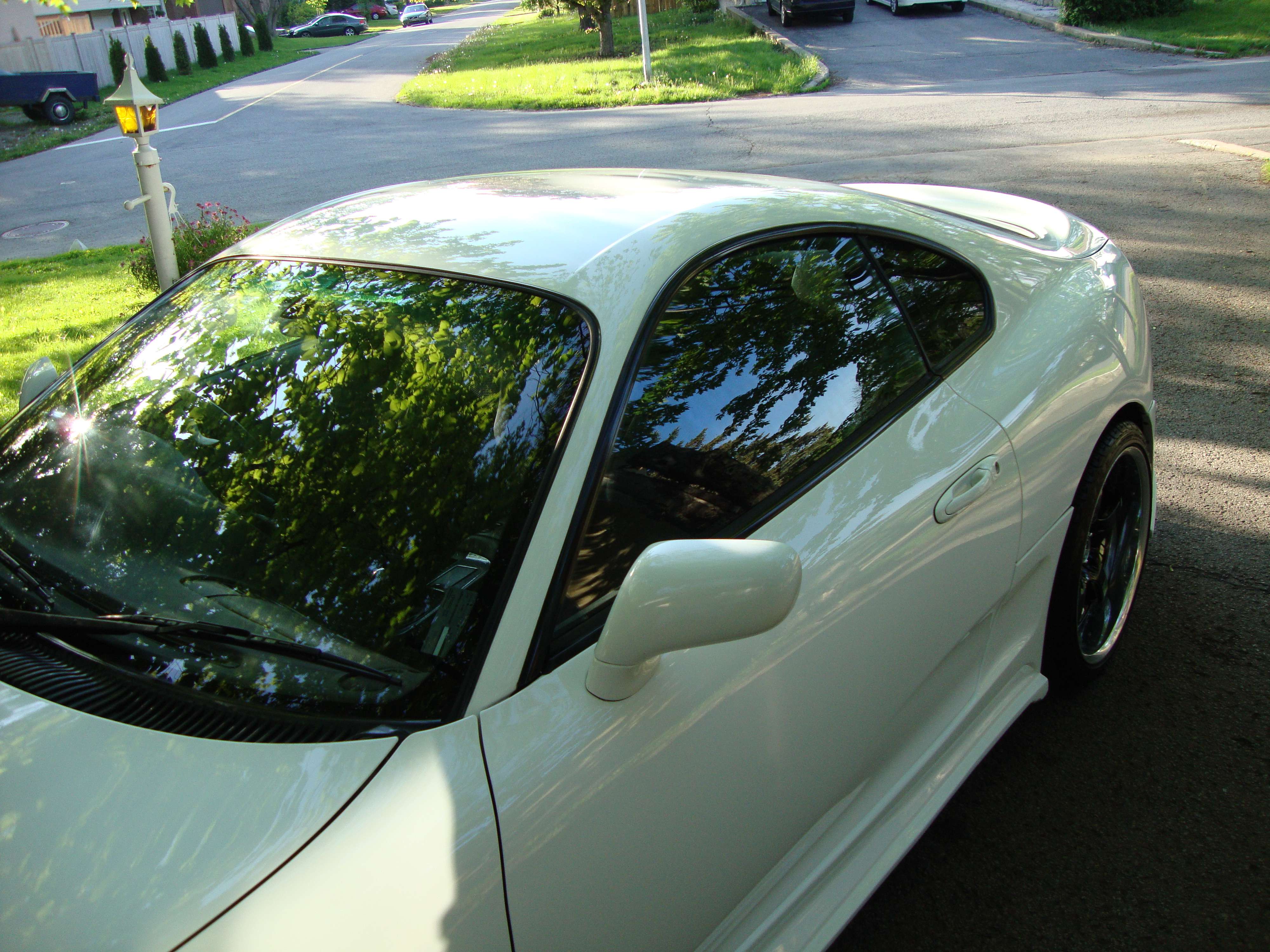
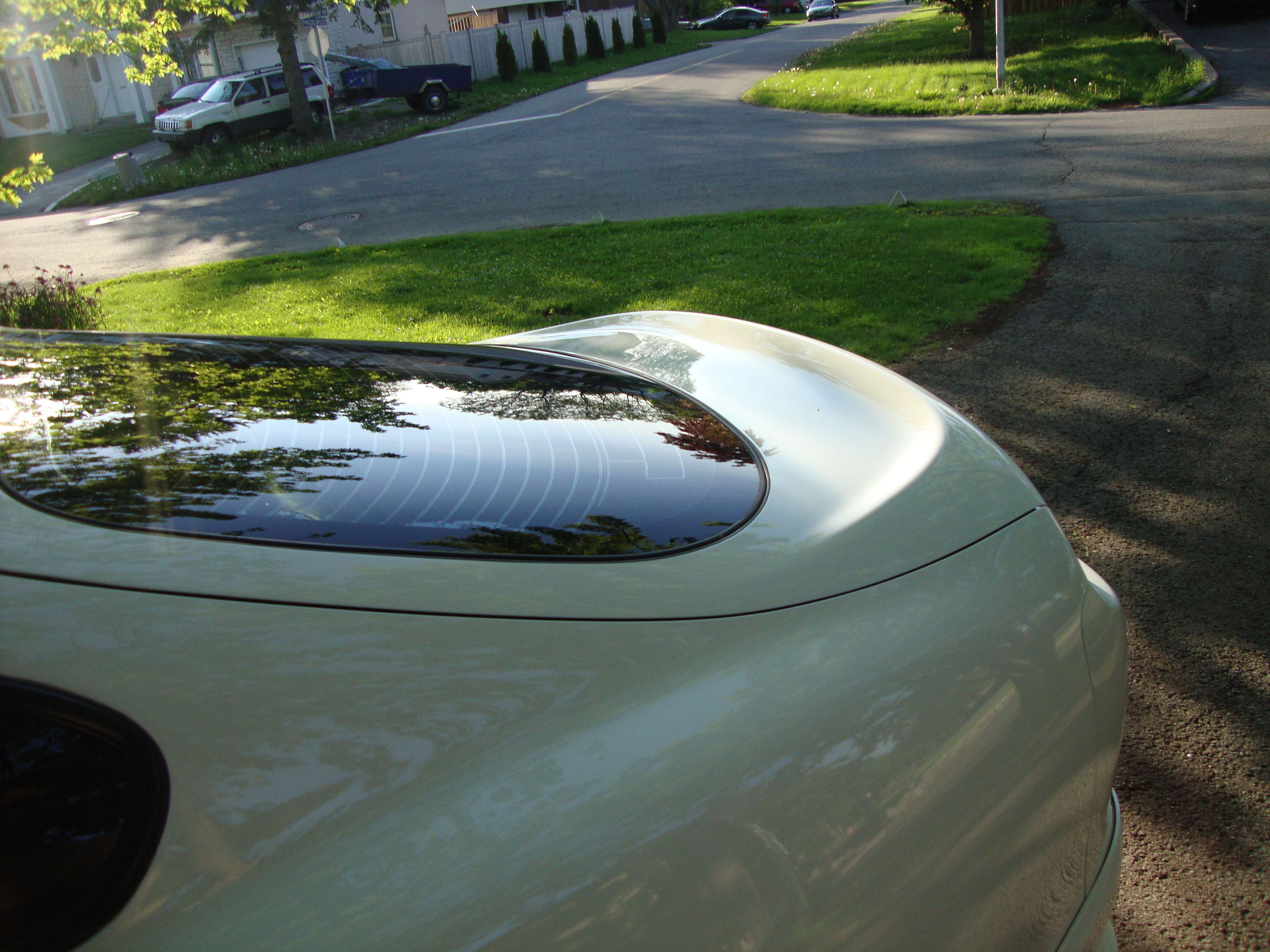


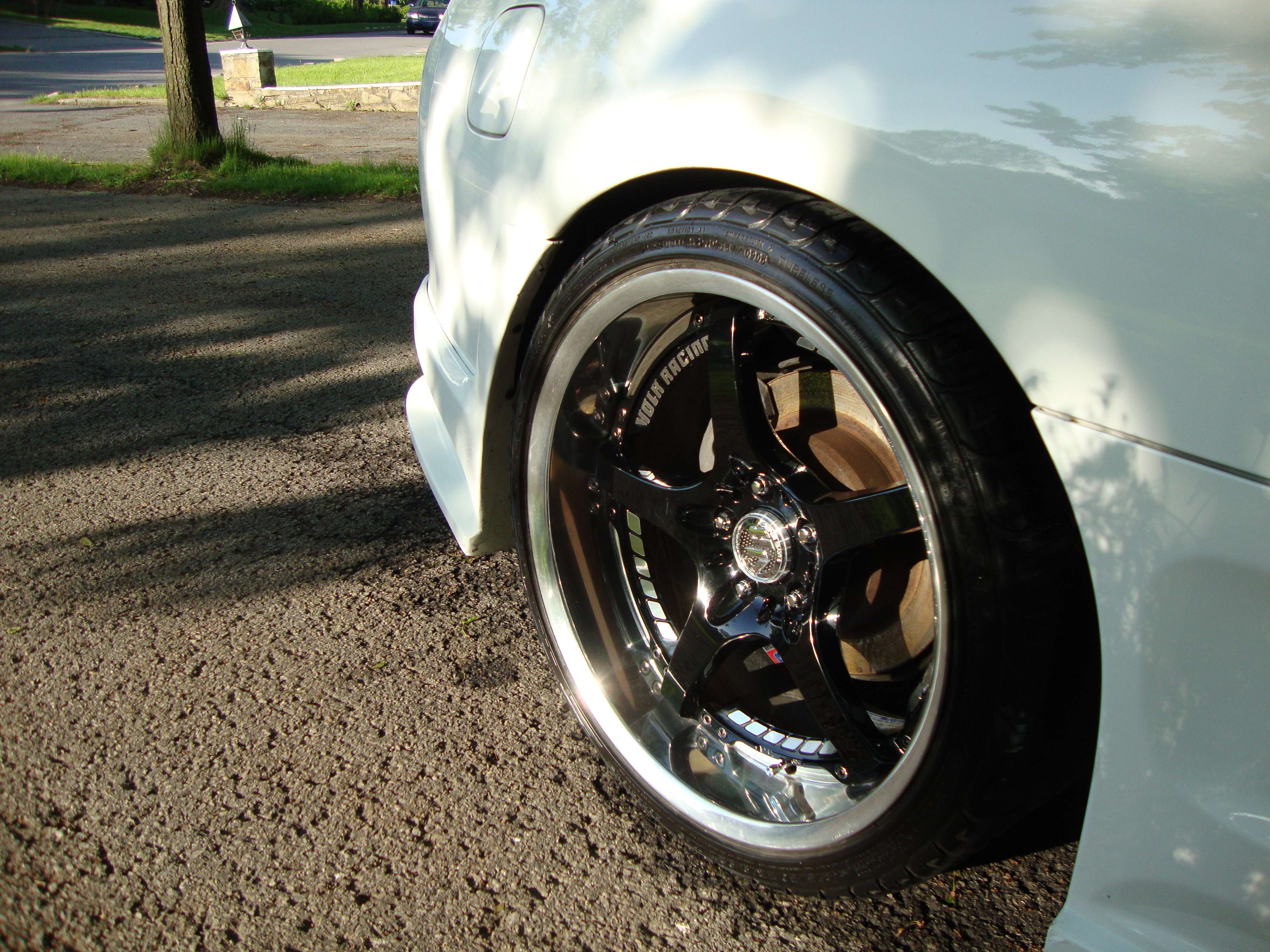
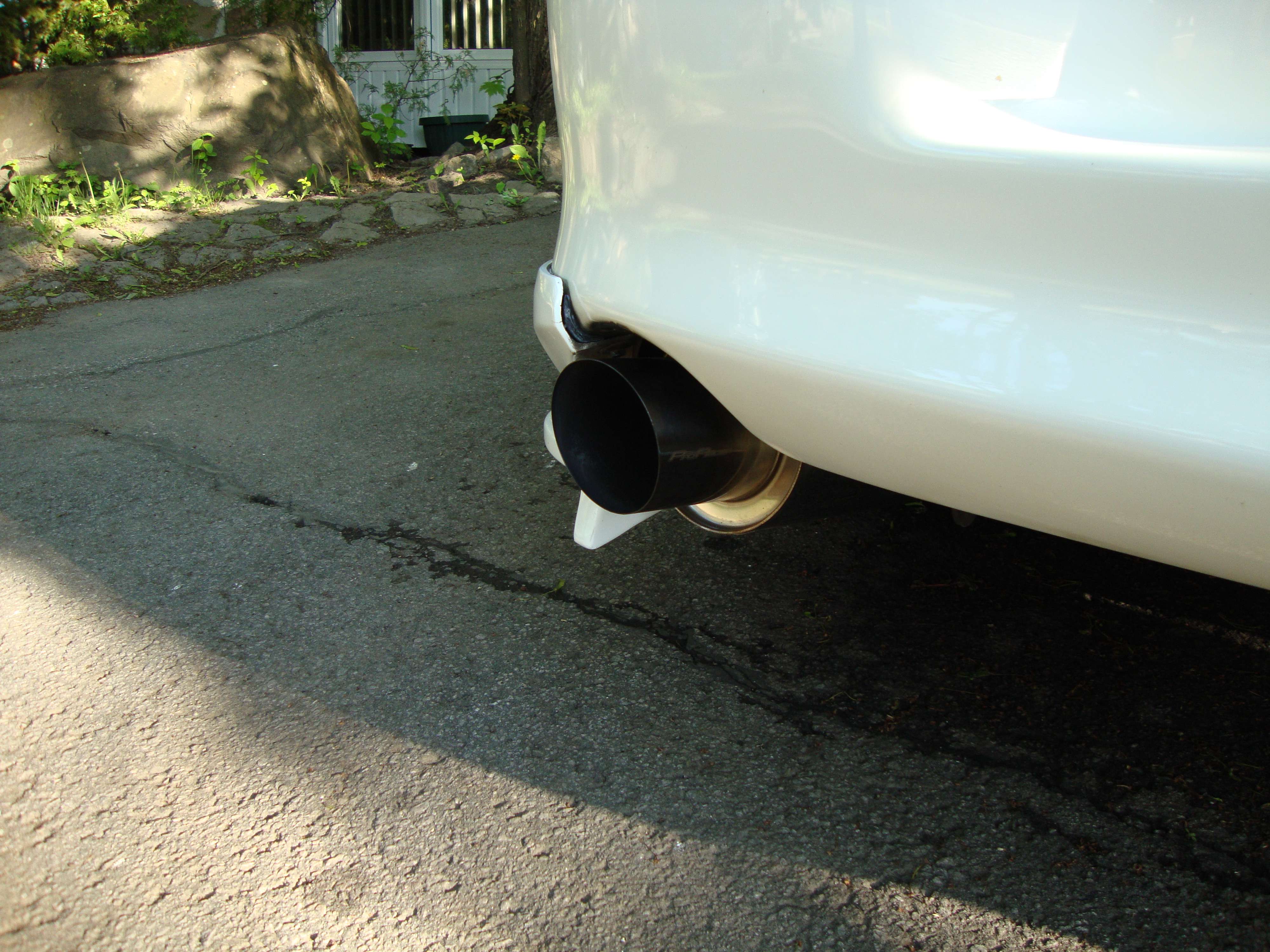


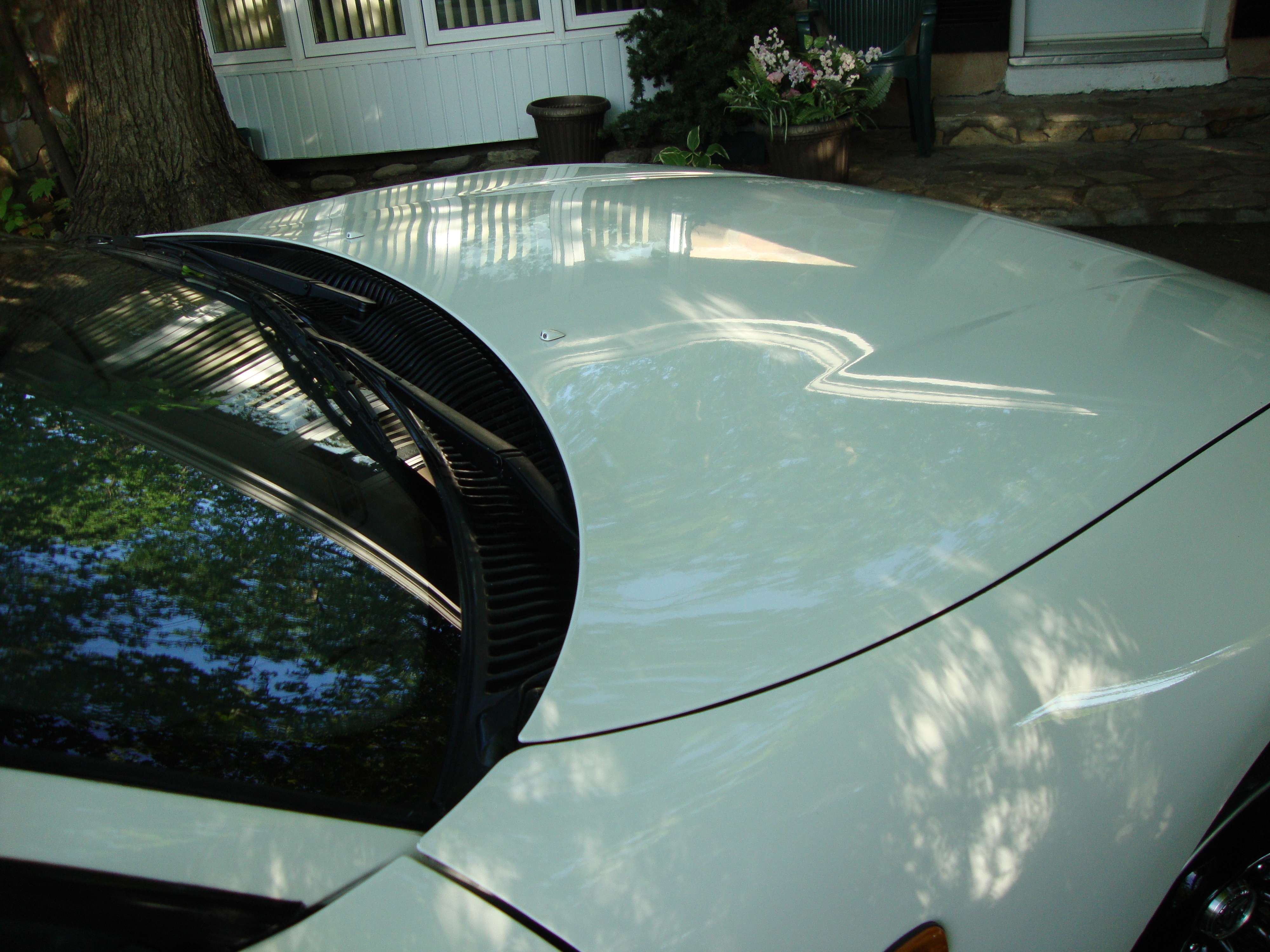


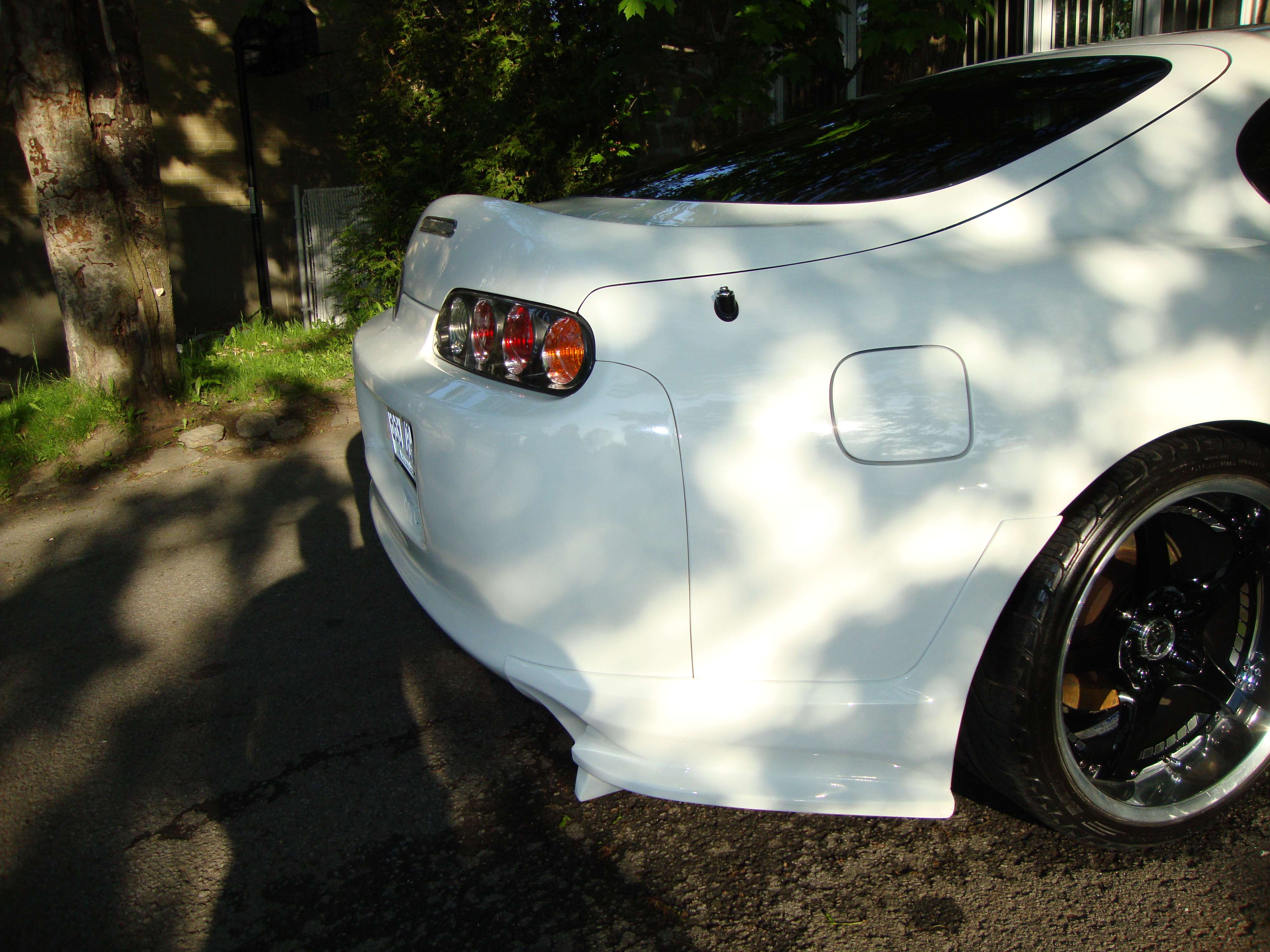





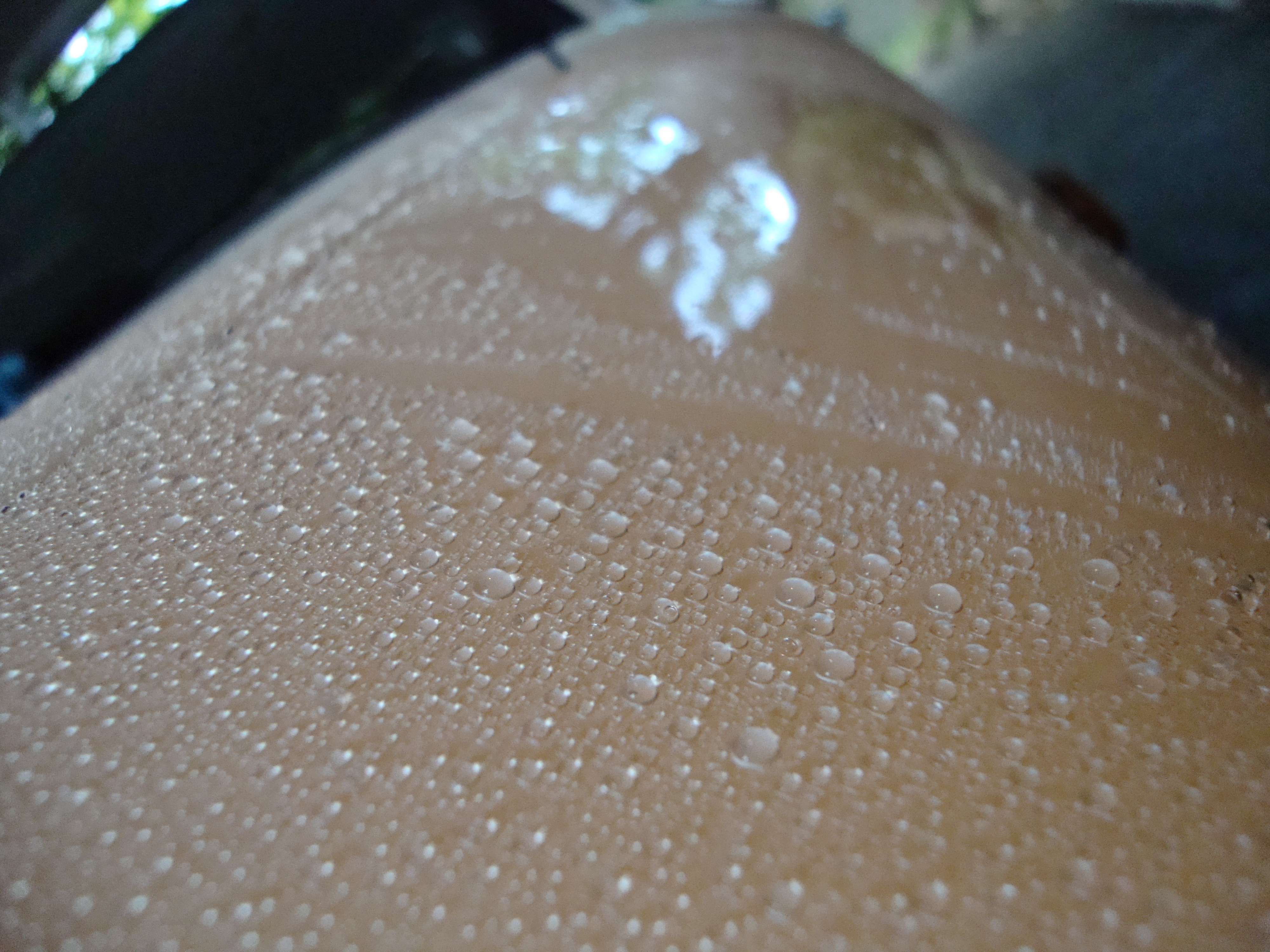
























































 Ce qui importe, c’est que vous êtes en sécurité avec moi !
Ce qui importe, c’est que vous êtes en sécurité avec moi !




















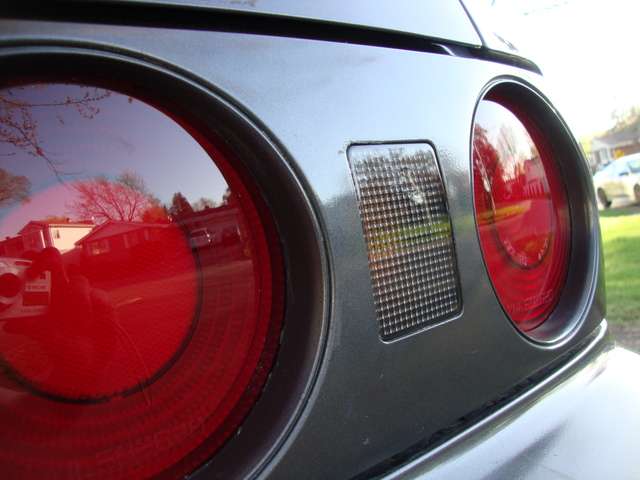































Comment